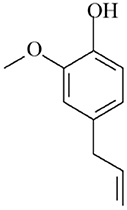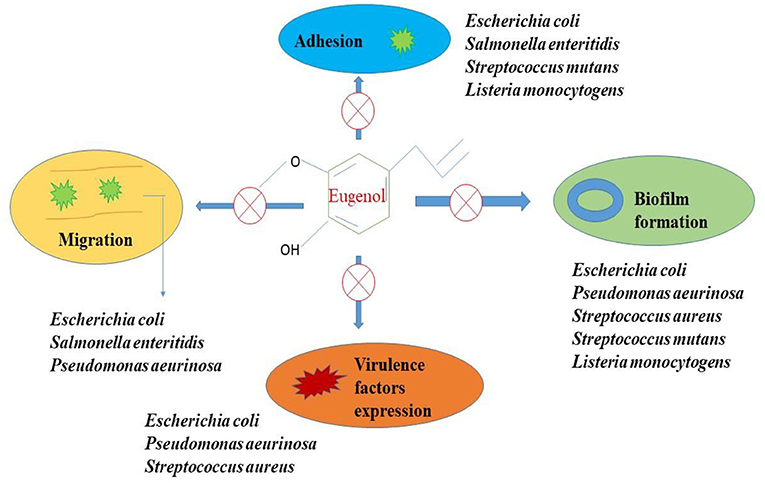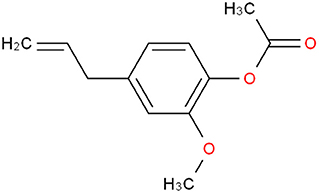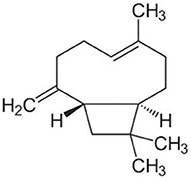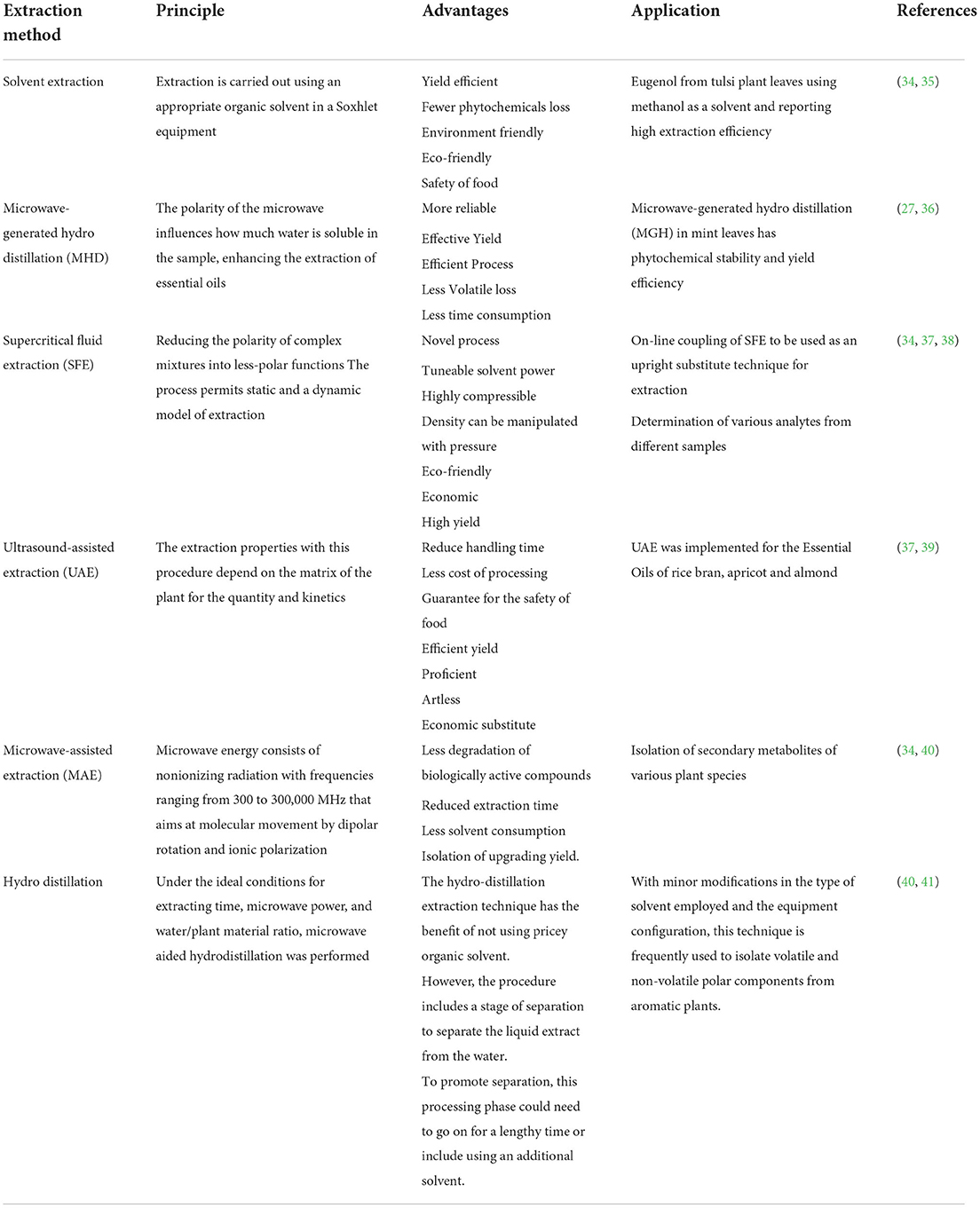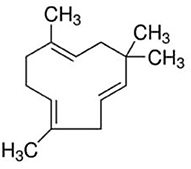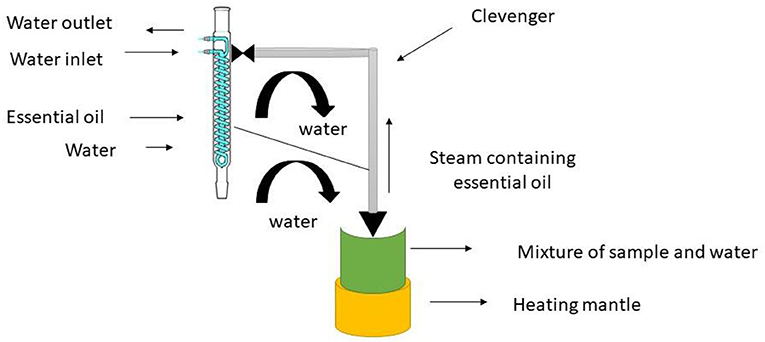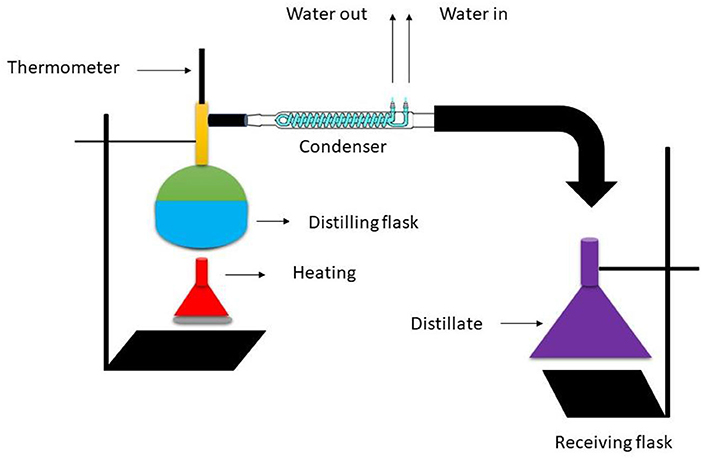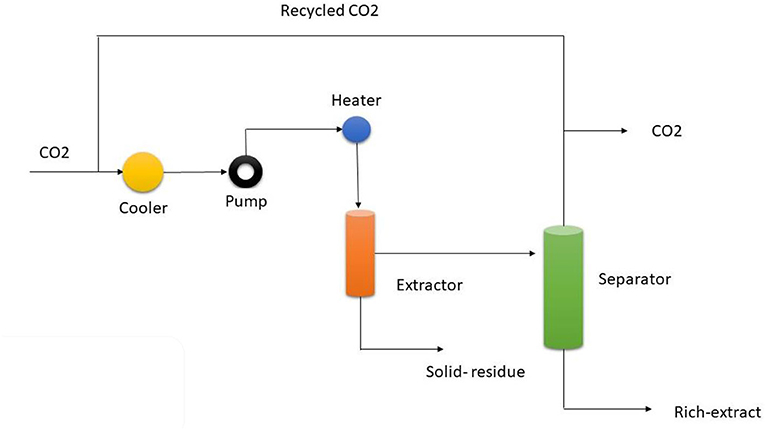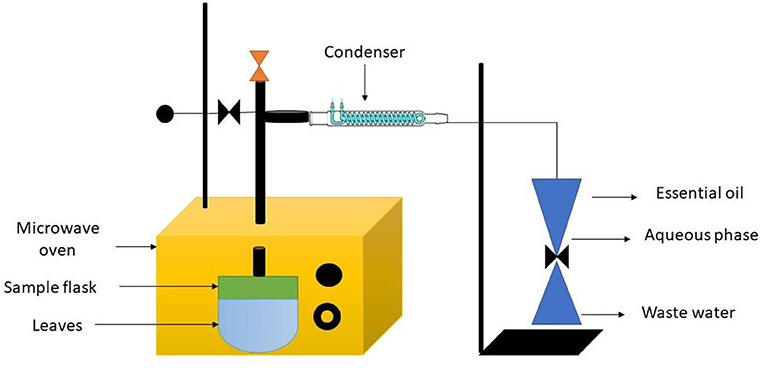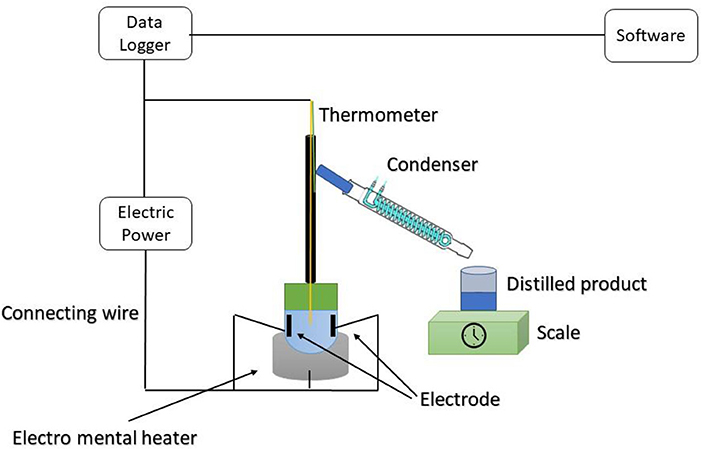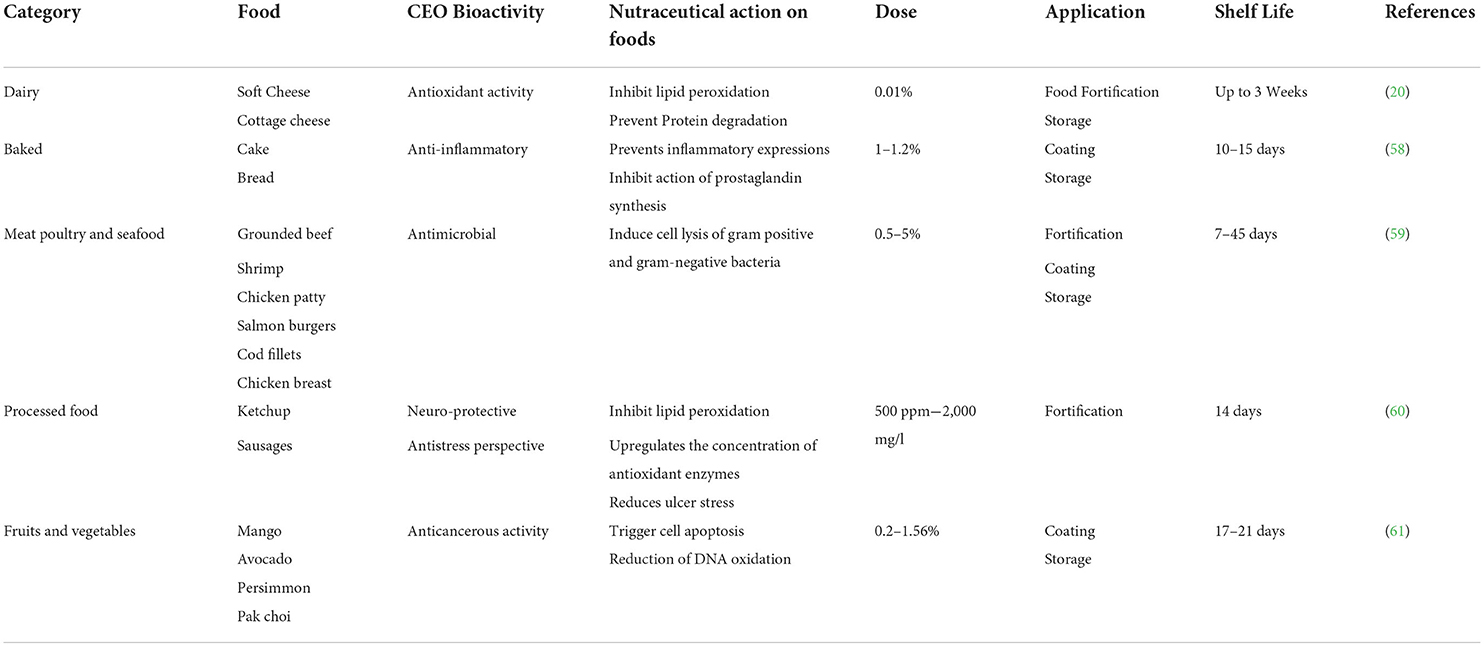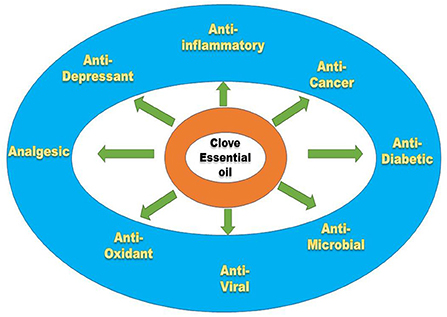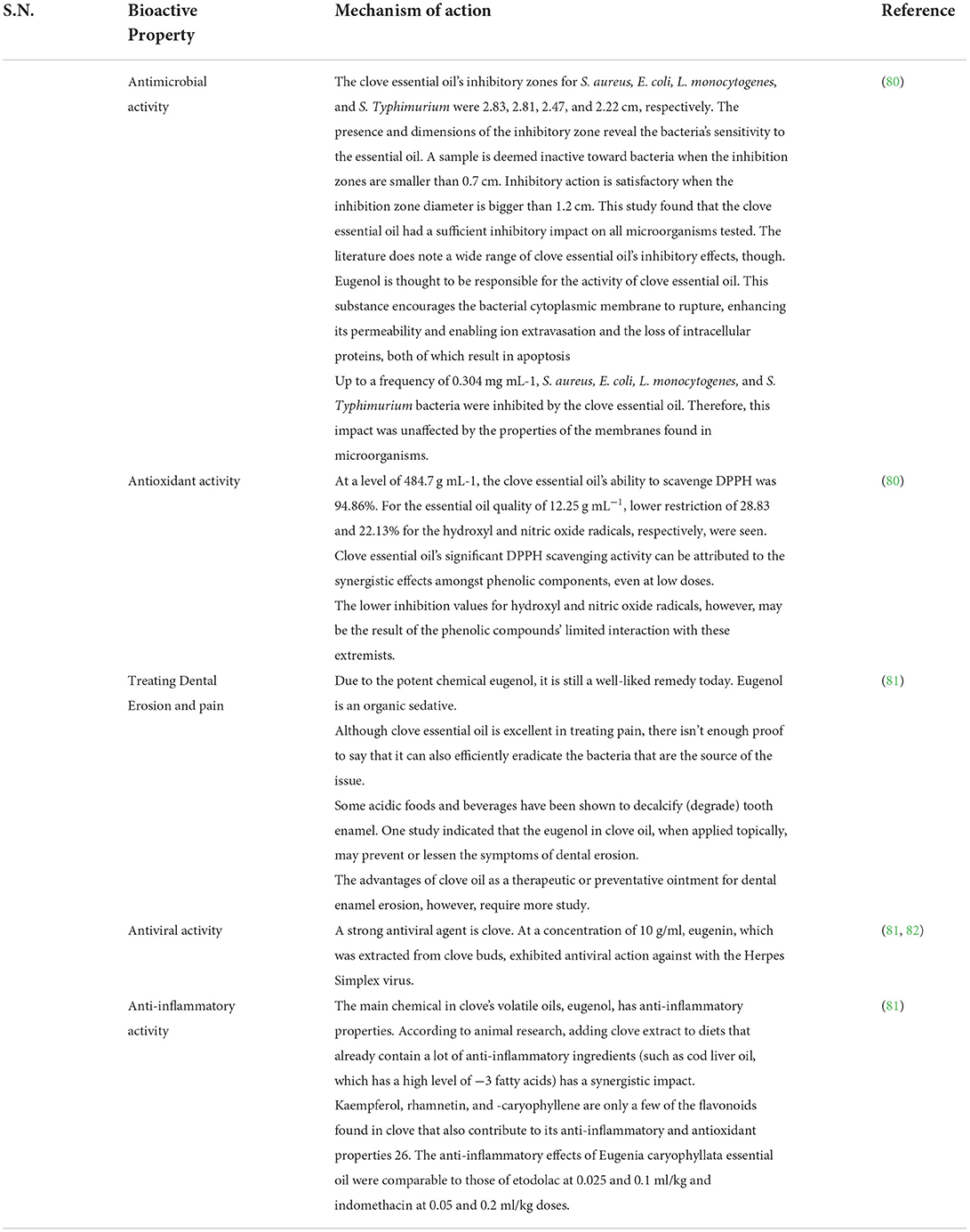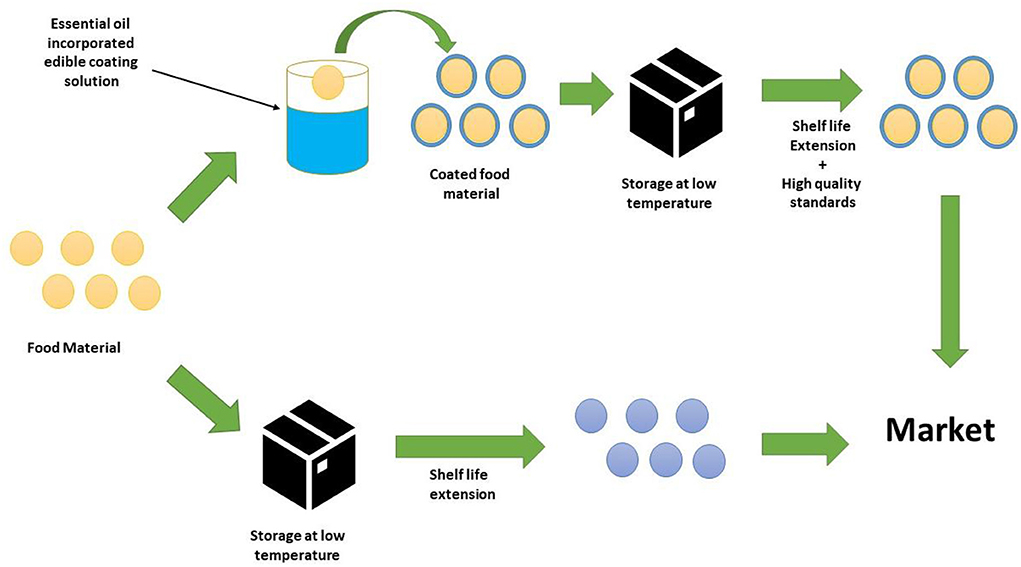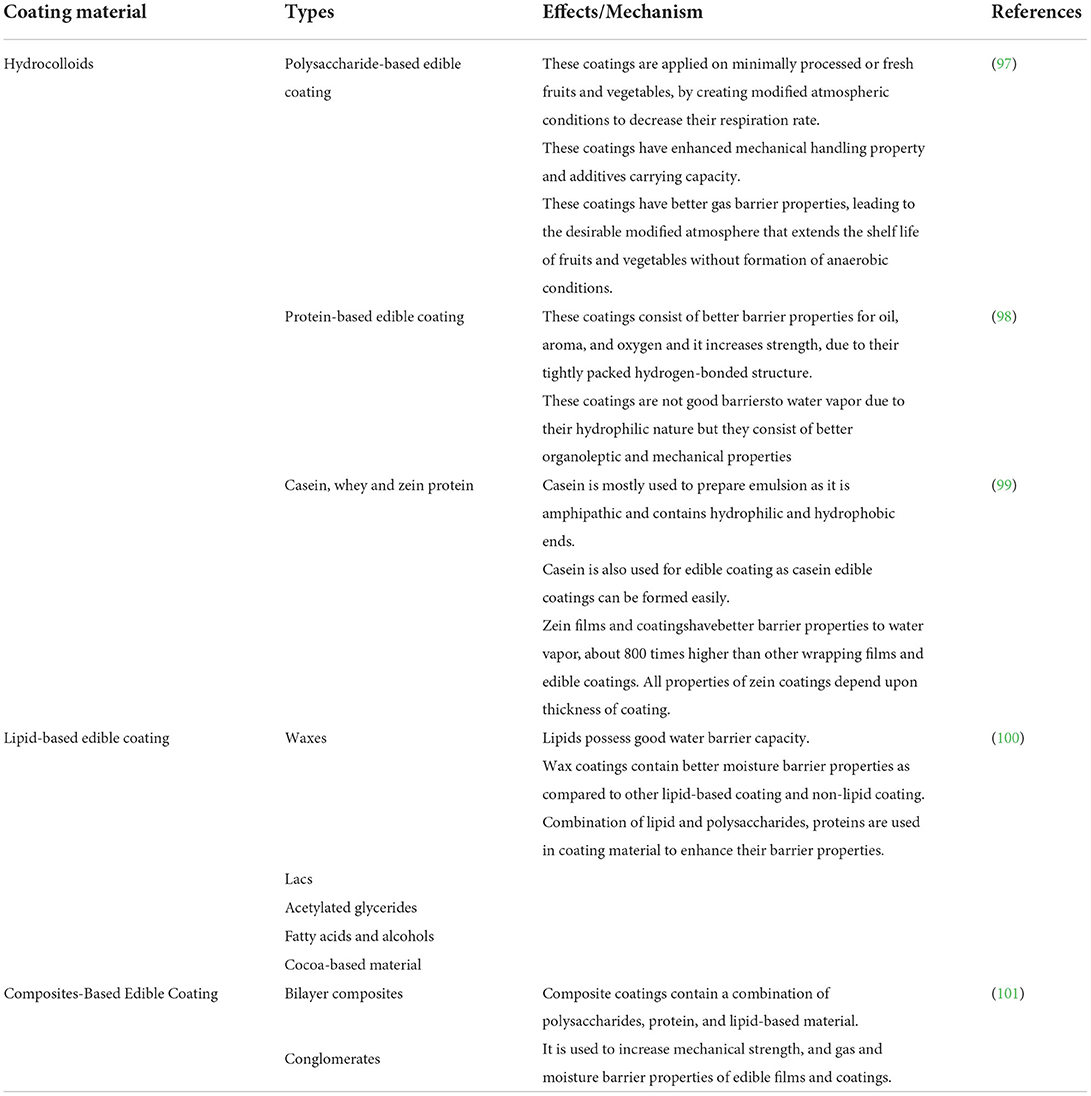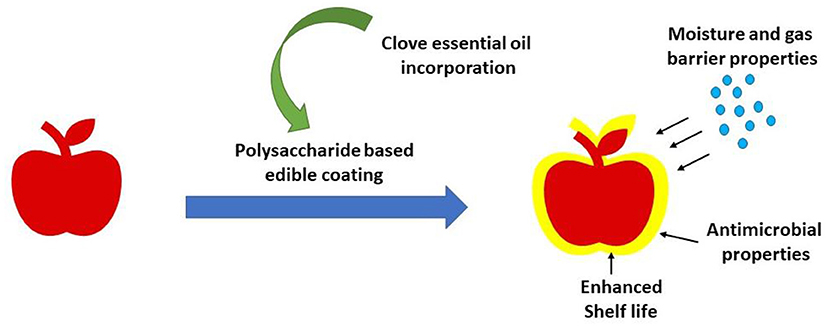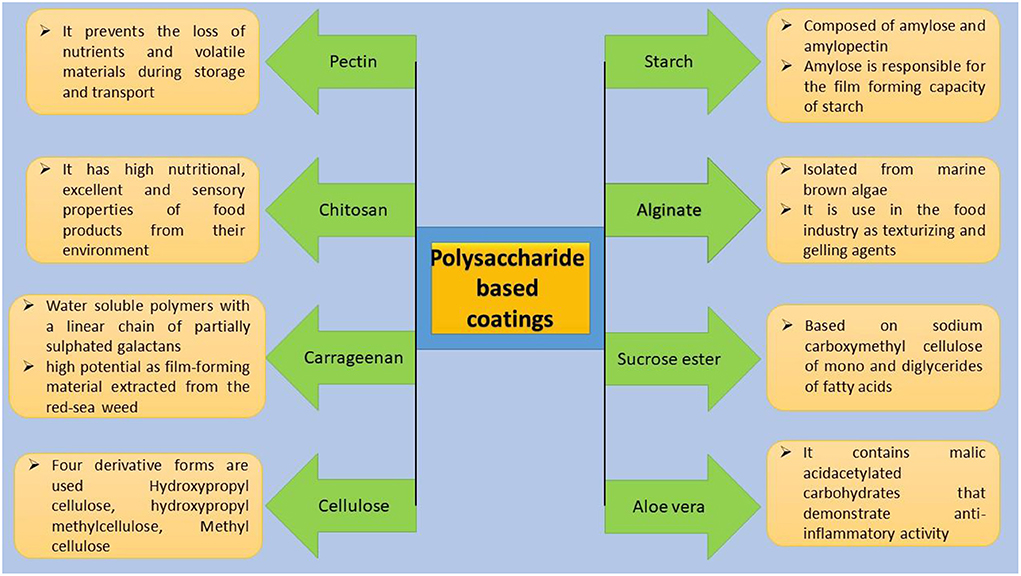- 1Department of Bioengineering, Integral University, Lucknow, India
- 2Department of Food Technology and Nutrition, Lovely Professional University, Phagwara, India
- 3Department of Food Technology, Islamic University of Science and Technology, Pulwama, India
- 4Division of Physiology, Biochemistry and Post-harvest Technology, ICAR–Central Plantation Crops Research Institute, Kasaragod, India
- 5Life Science Institute, University of Agricultural Sciences and Veterinary Medicine Cluj-Napoca, Cluj-Napoca, Romania
- 6Animal Science and Biotechnology Faculty, University of Agricultural Sciences and Veterinary Medicine Cluj-Napoca, Cluj-Napoca, Romania
- 7Department of Food Research, Centre for Innovative Process Engineering (CENTIV) GmbH, Stuhr, Germany
Many studies have demonstrated the use of synthetic preservatives and chemical additives in food is causing poisoning, cancer, and other degenerative disorders. New solutions for food preservation with quality maintenance are currently emerging. As a result, public concern has grown, as they desire to eat healthier products that use natural preservatives and compounds rather than synthetic ones. Clove is a highly prized spice used as a food preservative and for a variety of therapeutic reasons. Clove essential oil and its principal active component, eugenol, indicate antibacterial and antifungal action, aromaticity, and safety as promising and valuable antiseptics in the food sector. Clove essential oil and eugenol are found to have strong inhibition effects on a variety of food-source bacteria, and the mechanisms are linked to lowering migration and adhesion, as well as blocking the creation of biofilm and various virulence factors. This review emphasizes the importance of CEO (clove essential oil) in the food industry and how it can be explored with edible coatings to deliver its functional properties in food preservation.
Introduction
Clove is the common name for the herb Eugenia caryophyllata, belonging to the Myrtaceae family. A range of bioactive compounds, including some potent antioxidants and antimicrobials, are present in cloves, which are the dried flower buds of the clove tree (1). Scientists reported that clove essential oil (CEO) is primarily composed of phenylpropanoids namely eugenol and its derivatives, with low amounts of -humulene and -caryophyllene chemical components (2). CEO's biological qualities, which include antioxidant, antibacterial, antiseptic, pesticide, analgesic, and anticarcinogenic activity, make it useful in numerous industries such as food, biomedical, packaging, sanitary, cosmetics, and pharmaceuticals (3). CEO is often used in food as natural preservative, colorant, and a spice (4). Essential oils comprise both labile and volatile substances that dissolve or evaporate easily during processing, usage, and storage, or while added into food or packaging materials, among other conditions, such as low pressures, high temperatures, the presence of light and air, and others (5). Due to its exceedingly volatile and low water-soluble components, such as eugenol, the CEO's antibacterial and antioxidant capabilities are severely limited (6). Encapsulating bioactive substances like essential oils can be an efficient way to protect them from deterioration in harsh environments and be potentially utilized to increase the shelf life of essential oils and provide delivery systems with the controlled release (7).
It has been investigated that many nanoencapsulation strategies for bioactive substances (8). Ionotropic gelation is a very efficient encapsulation process that results in excellent stability, long usable life, higher loading capacity, good water dispersibility, and controlled release of encapsulated bioactive substances (8). The secondary metabolites of aromatic plants that make up essential oils are a complicated mixture. Due to their antioxidant and antibacterial characteristics, spices like clove, mint, oregano, cinnamon, and thyme have been used for millennia as food medicinal plants and preservatives. Numerous researches have now demonstrated the antifungal, antibacterial, antiviral, and anticarcinogenic properties of spice plants. Since it differs from other spices in terms of its high antioxidant and antibacterial capabilities, clove has attracted a lot of interest. A member of the Mirtaceae family tree, Syzygiumaromaticum (S. aromaticum) (alternative name: Eugenia cariophylata), sometimes called as clove, is indigenous to the Maluku Islands in eastern Indonesia. The commerce of cloves and the pursuit of this rich spice have increased the economic development of this Asiatic region for decades (9). Clove trees are commonly grown in coastal locations at maximum altitudes of 200 meters above sea level. After 4 years of plantation, the production of flower buds, which is the tree's commercialized section, begins. Before flowering, flower buds are harvested throughout the maturation phase. The collection could be done manually or chemically, with the help of a natural phytohormone that releases ethylene in the vegetal tissue, causing early maturation. Indonesia, India, Malaysia, Sri Lanka, Madagascar, and Tanzania, particularly the island of Zanzibar, are now the major clove producers. Clove is grown in Brazil's northeast region, in the states of Bahia and Valença, Ituberá, Taperoá, Camamu, and Nilo Peçanha, on an estimated 8,000 hectares, generating close to 2,500 tons per year (10).
Clove oil possesses biological qualities like antifungal, antibacterial, antioxidant, and insecticidal capabilities, and has been utilized in cuisine for centuries as a flavoring ingredient and antimicrobial material (11). Clove oil is also used as an antiseptic in oral infection treatment. Mold, yeast, and bacterial growth are inhibited by clove essential oil (12). It was found efficient against S. enteritidis and L. monocytogenes in cheese and tryptone Soy Broth. Clove essential oil's significant biological and antibacterial properties are due to the high amounts of eugenol it contains. Eugenol and the phenolic components of clove essential oil have both been demonstrated to denature proteins and interact with phospholipids in cell membranes, affecting the growth and permeability of various gram-positive, gram-negative bacteria and numerous yeast strains. In a time-dependent kinetic process called microbial inactivation, the viability of organisms exposed to biocides varies. Inactivation kinetics are influenced by the concentration and type of biocide, the type of microbe, and environmental variables like pH, temperature, and the presence of organic matter. When exposed to organic fluids like serum, blood, proteins, and so forth, certain chemicals that are potent antibacterial agents in the lab often lose their efficacy (11).
Food spoilage caused by microorganisms results in massive food wastage and is a major public health concern (13). A variety of synthetic preservatives are employed to suppress microbe development in foods, resulting in fewer foodborne medical conditions and longer shelf lives for goods (14). However, their usage is being questioned due to health risks and probable rise in the microbial resistance. As a result, it is desirable to develop and use natural, safe, and effective antibacterial compounds (15). The majority of natural antimicrobials (Derived from plants) can effectively reduce foodborne pathogenic bacteria while also prolonging shelf life (16). Furthermore, as is the case in the majority of situations, plants or their extracts are thought to be generally harmless for people. Many essential oils from a variety of plants, such as edible and medicinal herbs, spices, and plants, are safe and have powerful antibacterial activities (17), and they have found use in medicine and food industries (13).
It has been suggested that EOs could be enclosed in micro- and nanoparticles (MPs and NPs), micro- and nano capsules (MCs and NCs), films, or nanocomposite materials. These techniques increase the stability of CEO in aqueous media and, as a result, increase their bioavailability, lessen their harmful effects, give the encapsulated substance a controlled release, shield them from the environment, or cover up their potent odor (18). Due to their larger surface-to-volume ratios and resulting increases in reactivity, micro- and nanocarriers with customized characteristics are of particular interest. Typically, these systems are based on lipids, polymers, or a mix of the two. Additionally, there are some differences between micro- and nanocarriers in terms of how they behave after application, their capacity to penetrate certain biological barriers, their ability to enter cells, and potential tissue reactions, which will influence the choice of one over the other depending on the application. Encapsulation has been utilized to boost the added value of CEO by extending its shelf life, enhancing its physicochemical stability, achieving controlled release, and suggesting new uses. With intriguing results, various encapsulation techniques using a variety of carriers have been created and documented in the literature. The end products may take the form of emulsions, complexes, liposomes, micelles, or particles or capsules. Most studies have concentrated on its stability and bioavailability enhancement and preservation of its valuable biological properties during processing and storage, while others have focused on its action against specific strains of microorganisms (19).
This review article explains the bioactive properties of CEO and along with classification and potential benefits of CEO. Additionally, this article also gives a brief explanation of edible coatings and materials used to prepare edible coatings which carry the properties of essential oils for providing protection to the fruits and vegetables.
Classification of clove essential oil based on the chemical composition
CEO has over 30 different chemicals, of which eugenol makes up the majority (at least 50%). Eugenyl acetate, -humulene, and -caryophyllene make up the remaining 10–40% (20).
Eugenol
Clove buds, cinnamon leaves and bark, pepper, turmeric, oregano, thyme and ginger are among the plants that contain eugenol. Several other aromatic herbs, including bay, basil, mace, marjoram, and nutmeg, also contain significant amounts of eugenol. Clove and cinnamon are the most productive plant sources of eugenol, with 45–90% and 20–50% eugenol, respectively. However, the major issues associated with these sources are greater cultivation capital and industrial extraction of eugenol. Tulsi, ginger, bay, and pepper, on the other hand, are inexpensive and plentiful begetters that can be used in place of cloves and cinnamon. Because aerial portions of plants, such as leaves, owers, and bark consist of a significant quantity of essential oils, eugenol is mostly found in these parts. 1, 3 Tulsi leaves also include a high amount of eugenol, usually between 40 and 71%. The eugenol content in various portions of plants, on the other hand, fluctuates with the season. In comparison to summer varieties, studies show that the highest eugenol yield can be produced in the fall season (20). Chemical structure of eugenol is represented in Figure 1.
L. Cinnamomum,S. aromaticum, O. vulgare,Z. officinale, P. nigrum, and T. vulgaris all contain the phenylpropanoid chemical eugenol (21). Approximately 2,460 mg/L of eugenol may be dissolved in water at 25°C, and it has a potent odor and flavor. Eugenol is a volatile molecule that can range in color from colorless to light yellow. Insecticide, antibacterial, anti-inflammatory, antiviral, wound-healing, antioxidant, and anticancer properties of eugenol have all been described (22). In studies using mice, clove oil emulsion was found to possess wound-healing and anti-inflammatory properties (23). Twenty days after the wound, the skins that had been exposed to eugenol displayed reepithelialisation. Eugenol has demonstrated potential anticancer effects against skin, melanoma, leukemia, breast, prostate, stomach, colon, and other cancers (21). Eugenol suppresses the growth and development of tumors, raises the amount of reactive oxygen species (ROS), causes apoptosis, and exhibit genotoxic effects on many cancer cells (24). Antimicrobial mechanism of eugenol is depicted in Figure 2. Eugenol, isoeugenol, and methyl eugenol show insecticidal activity to the storage pathogens, Sitophilus zeamis and Triboliumcostaneum. The clove leaf and bud oils showed potent insecticidal activity against the human head louse (Pediculus capitis).
Eugenyl acetate
Eugenyl acetate is a phenylpropanoid derivative of eugenol, possessing antibacterial, antioxidant, antimutagenic, anticancer, and anti-virulence properties (25). It depicted 94.5, 92.1, and 100% inhibition at 200 μg/ml against H. oryzae, F. moniliforme, and R. solani, respectively (26). A powerful antioxidant, eugenyl acetate demonstrated 90.30% DPPH free radical scavenging at 35 g/ml and 89.30% NO free radical scavenging at 60 g/ml. However, showed higher antifungal action against Candida spp. and reduced the ability to produce biofilms. At 0.3 g/mL, eugenyl acetate likewise demonstrated complete toxicity against A. salina. Eugenyl acetate's low fatal doses may also be a sign of toxicity to other microbes, such disease-carrying insect larvae. Eugenyl acetate demonstrated potential as a larvicide with an LC50 of 0.1 mg/ml against A. aegypti. The octopaminergic system is primarily interfered with as the mechanism of larvicidal effect. The food and cosmetic sectors have increasing demand because to the advantageous larvicidal, anticancer, antibacterial, and antioxidant qualities (27). Schematic representation of chemical structure is given in Figure 3.
β-caryophyllene
Clove (Symphyllum aromaticum L.), black pepper (Piper nigrum L.), hemp (C. sativa L.), Eugenia cuspidifolia, guava leaves (Psidium cattleianum Sabine), and Eugenia tapacumensis, all contain the sesquiterpene -caryophyllene (28). Although the -caryophyllene is soluble in ethanol, it is insoluble in water. Concerning breast, prostate, pancreatic, leukemia, skin, cervical, lymphatic, and cervix cancer, -caryophyllene has shown anti-inflammatory, antibacterial, antioxidant, anticarcinogenic, anxiolytic-like, and local anesthetic actions (29). According to these investigations, -caryophyllene inhibited colon cancer cell growth and proliferation, interfered with tumor formation phases, and lowered the activity of extracellular matrix metalloproteinases. Chemo-sensitizing properties of the -caryophyllene can increase the potency of medications against tumor cells. An. subpictus is the most susceptible to -caryophyllene, followed by Ae. albopictus and Cx. Tritaeniorhynchus. According to the DPPH and FRAP scavenging procedures, the -caryophyllene has a radical scavenging capacity of roughly 1.25 and 3.23 M, respectively. These findings demonstrated the significant antioxidant activity of -caryophyllene. Chemical structure of β-caryophylleneis represented in Figure 4.
α-humulene
A sesquiterpene called -humulene can be discovered in Salvia officinalis L., Senecio brasiliensis,S. aromaticum L. and Humulus lupulus. In lung, prostate, colon, and breast cancer, this substance has demonstrated anti-inflammatory and anticancer properties. According to several findings, the -humulene inhibited colon cancer cell growth and changed the mitochondrial cell membrane (30). Additionally, it can enhance other anticancer bioactivities and the antiproliferative effects of cytostatic medications. According to Fernandes et al. (31), model mice and rats treated orally with -caryophyllene and -humulene (50 mg/kg) had anti-inflammatory effect that were comparable to those of dexamethasone treatment. TNF production is stopped by -humulene, whereas -caryophyllene just slows down its release. Additionally, they lessen the synthesis of prostaglandin E2, nitric oxide synthase, and cyclooxygenase, as well as their inducible expression. Despite having larvicidal action against three vector mosquitoes, An. Subpictus, Ae. albopictus, and Cx. tritaeniorhynchus (LC50 = 10.26, 11.15, and 12.05 g/ml, respectively), -humulene is safer for G. affinis (LC50 = 1024.95 g/ml). Additionally tested against beetle species that prey on stored goods, -humulene demonstrated larvicidal LC50 values of 20.86 g/ml and EC50 values of 77.10 g/ml on H. armigera eggs (32). The LC50 value for -humulene's toxicity against S. granaries was 4.61 L/mL. At 1 and 3 h after exposure, -humulene decreased S. granarius' respiration rate (33). Clove oil can be extracted by different methods depending on the purity concern and need as well (Table 1). Figure 5 represents the chemical structure of α-humulene.
Iso-eugenol
Eugenol extracted from clove leaf oil can be isomerized to create iso-eugenol. Iso-eugenol (C10H12O2) has the chemical formula 1-hydroxy-2-methoxy-4-propenylbenzene, 4-hydroxy-3-methoxy-1-propenylbenzene, and 2-methoxy. 4-propenylguaiacol and 4-propenylphenol. It was previously recognized that the commercial precursor for synthetic vanillin (C8H8O3), 3-methoxy-4-hydroxybenzaldehyde, was iso-eugenol. Since isoeugenol contains a phenol moiety, it may undergo conjugation to produce a hydrophilic metabolite. In fact, after oral administration to rats, the phenolic sulfate and glucuronide of isoeugenol are found in the urine (42). As the sulfate, significant levels of side chain oxidized metabolites, including 3′-hydroxylated isoeugenol, are also found. After side chain oxidation, isoeugenol's 3′-position is not susceptible to forming the quinone methide. Therefore, it is not anticipated that isoeugenol will be inactivated by the synthesis of quinone methide to the same degree as eugenol. Cigarettes, non-alcoholic beverages, ice cream, and chewing gum are the main uses for iso-eugenol. Iso-eugenol is mostly produced in Indonesia by tiny distilleries in the Java, Sumatera, Sulawesi, and Bali regions (43).
Methyleugenol
A number of herbs, including basil, clove, and nutmeg, contain methylleugenol (3,4-dimethoxyphenyl-3′-propene), an O-methylated derivative of eugenol, as a bitter taste component. In rodents, methyleugenol exerts an anesthetic effect (44). Methyl eugenol occurs naturally in a variety of spices, including nutmeg, clove oil, and others. Numerous studies have demonstrated that methyl eugenol is not one of the main components of clove oil and only appears in extremely small concentrations (less than 1%) (45). Only extremely small amounts, or even a few drops, of clove oil are used in food, ensuring that the amount of methyl eugenol present is negligibly low.
Extraction methods of clove essential oil
CEO can be extracted through various methods that are explained below.
Hydro distillation
Hydro distillation (HD) and organic solvent extraction are two common traditional CEO extraction techniques that typically have the disadvantage of poor work efficiency, high cost, and significant pollution. Nowadays, with the advancement of technology and the green concept, some novel methods have been developed to address the drawbacks of traditional extraction strategy. Examples include microwave-assisted hydro distillation (MAHD) ultrasound-assisted hydro distillation (UAHD), and enzyme-assisted hydro distillation (EAHD). The essential oil from Aquilaria malaccensis wood was extracted using a Clevenger-style device, as described by European Pharmacopeia. To hasten the release of the essential oil, the wood was submerged in water for seven days before extraction. Then, 100 g of A. Malaccensis wood that had been air dried and reduced in size together with the necessary quantity of distilled water were added to a heating mantle that was linked to the Clevenger. To create steam that contained both water and essential oil, the sample mixes were heated to a boil at 100°C and one atm. This substance was concentrated and gathered in a Clevenger jar. During the extraction procedure, the surplus condensed water was recycled into the flask. This is the most straightforward and frequently least expensive method of distillation. Powders and extremely hard materials like roots, wood, or nuts seem to respond best to hydro distillation. The key benefits of this approach include using less steam, processing more quickly, and producing more oil. In distillation, the plant material is heated either by being submerged in boiling water or by being passed through a steam stream. The plant material's cell walls burst and crumble under the heat and steam, releasing the essential oils. The components of the essential oil and the steam are transported via a pipe and directed via a cooling tank before changing back to liquid form and being deposited in a vat. Since crude oils are not water-soluble, it is simple to separate them from the water and siphon off the resulting liquid, which is a combination of oil and water. The surface of the water will be covered with essential oils that are lighter than it. Schematic representation of the method is given in Figure 6 (21).
Steam distillation
Distillation is the traditional technique for detachment of volatile substances from plant material to create essential oils. When aromatic plants are subjected to steam or boiling water during distillation, their essential oils are released by evaporation. The restoration of the essential oil is facilitated by the hypothesis that, at boiling temperature, the combined vapor pressures equal ambient pressure when distilling two immiscible liquids, namely water and essential oil. As a result, the constituents of essential oils, which normally boil at temperatures between 200 and 300°C, evaporate at a temperature akin to that of water. The rising steam that contains the essential oils enters the narrow cooling tube. The quantity of essential oil obtained depends on the duration of the distillation process, the operating pressure, the temperature, and most importantly, the quality and type of the plant material. The extraction of essential oils from plants typically ranges from 0.005 to 10%. Three different methods of evaporation have existed historically: water distillation, water-steam distillation, and steam distillation. The process of distilling water is also known as “indirect” steam distillation. This process involves soaking plant material in water and boiling it. Boiling water produces steam, and that steam carries the volatile oils with it. The oil and water are then separated by cooling and humidification (46).
The drawback of this method, aside from its slowness, is that materials and fragrances deteriorate over time when exposed to heat. In the steam method, the leafy plant material is kept on a grill over the hot water, and the steam passes via plant material. To ensure even steaming and thorough extraction, the leaves must be placed on the grill with care. The method used to extract essential oils most frequently is “direct” steam distillation. In this procedure, the distillation tank itself does not contain any water. Instead, steam is introduced into the tank from an external source. When the steam ruptures the sacs housing the oil molecules, the essential oils are released from the plant material. At this time, condensation and segregation are standardized processes. In complement to those already mentioned, there are numerous more improved methods for finding organic fragrance components and essential oils, including turbo-distillation, hydro-diffusion, continuous-distillation, vacuum-distillation, cold-expression, molecular-distillation dry-distillation. These conventional extraction techniques all have substantial drawbacks, such as limited yields, contaminant generation, and constrained stability. The steam bubbled through the flask of vegetation in the hydro-distillation and steam distillation processes, evaporating the oil as it goes. As the emerging mixture of vaporized water and oil goes through a coil that is frequently cooled with access to water, the steam condenses there. Increasingly being adopted is used to extract the condensed water and essential oil, or centrifugation in extremely rare cases. Diagrammatic representation is given in Figure 7.
Super critical fluid extraction
The use of supercritical CO2 (SC-CO2), which is non-flammable, nontoxic, noncorrosive, and simple to handle, makes supercritical fluid extraction (SFE) a green technology that can operate at low pressures and close to room temperature. Supercritical CO2 (SC-CO2) can solubilize lipophilic molecules, and is inexpensive and easily accessible in bulk amounts with a high degree of purity, ensuring minimum change of the bioactive chemicals and keeping their curative or functional characteristics (Figure 8). It is a green and “generally acknowledged as safe” (GRAS) method. Since its inception, the extraction method most commonly referred to as supercritical fluid extraction (SFE) has been praised for its outstanding performance. Currently, SFE is widely used in a variety of fields, including toxicology, chemistry, the environment, textiles, petrochemicals, and polymers, in addition to the food and medicine industries. The extraction of natural plant materials utilizing this method of extraction has been pushed by significant advances in the field of supercritical fluid technology over the past three decades and has been characterized as an environmentally friendly technology. These natural sources could include, among others, plants, algae, and microalgae. Additionally, this method's objectives include using nontoxic organic solvents, low extraction durations, better pollution protection, and good selectivity.SFE is based on certain fluid characteristics including diffusivity, density, dielectric constant, and viscosity, and typically entails changing specific parameters like temperature and pressure to achieve a supercritical fluid. Given these conditions, a fluid exists between both the gas in question and the liquid since the density of the SF is similar to that of the liquid and its viscosity to that of the gas. In other words, the supercritical state of a fluid is the state in which the properties of a liquid and a gas are the same. Additionally, SFs offer greater transportation qualities than liquids because their density, unlike that of liquid solvents, may be changed by adjusting the pressure and temperature. SFE is based on certain fluid characteristics including density, dielectric constant, diffusivity, and viscosity, and typically entails changing specific parameters like pressure and temperature to achieve a supercritical fluid. Given similar conditions, a fluid exists between the gas in question and the liquid since the density of the SF is similar to that of the liquid and its viscosity to that of the gas. In other words, the supercritical state of a fluid is the state in which the properties of a liquid and a gas are the same. Additionally, SFs offer greater transportation qualities than liquids because their density, unlike that of liquid solvents, may be altered by adjusting the pressure and temperature (47).
Microwave-assisted hydro distillation
Rapid warming in the microwave field and conventional solvent extraction are combined in the Microwave-assisted Hydro-distillation (MAHD) process. This allows for significant time savings, allowing the recovery to be finished in a matter of minutes. MAHD was created and utilized for the extraction of essential oils from Xylopia aromatica (Lamarck) and Lippia alba (Mill) in an effort to combine microwave heating with the traditional HD (48). For laboratory scale applications in the extraction of essential oils from various kinds of aromatic plants, Tigrine-Kordjani et al. (49) created a Microwave Assisted Distillation (MAD) using free solvent (Figure 9). Chemat created solvent-free microwave extraction (SFME) in 2015 (50). This procedure, which follows a very straightforward principal, entails the dry distillation of a fresh plant matrix with the use of a microwave without the use of water or any other organic solvent. SFME is not a modified hydro-distillation (HD), which utilizes a lot of water, nor is it a modified microwave-assisted extraction (MAE), which uses organic solvents. The glands and oleiferous receptacles burst as a result of the selective heating of the in-situ water content of plant material. Thus, the essential oil is liberated from the plant material and evaporated by azeotropic distillation with the water. To add the original water back to the plant material, the additional water can be refluxed into the extraction vessel. This method has been used on a variety of fresh and dried plants, including citrus fruits, aromatic herbs like basil, mint, and thyme, and spices like ajowan, cumin, and star anise. Sui et al. (51) developed an effective Microwave Pre-treatment (MP) approach to preserve the quality of postharvest rosemary leaves and found that it might be an effective way to preserve quality and extract essential oil from rosemary and other fragrant herbs. At atmospheric pressure, 100 gr of rosemary were heated for 30 min with the addition of 300 ml of water in a conventional MAHD technique. The sample was adequately extracted of all the essential oils during this time. At least three extractions were made for everyone.
Ohmic heating-assisted hydrodistillation
In comparison to conventional hydrodistillation, ohmic heating assisted hydrodistillation is a revolutionary approach that has promise for the efficient extraction of essential oils from a variety of plant sources (Figure 10). Hydrodistillation with ohmic heating assistance is a green technology that can be scaled up for the manufacture of essential oils. Ohmic heating is the mechanism by which foodstuff produces heat when an electric current is passed through it due to its electrical impedance. Consequently, heat the cell. The two key variables in an ohmic heating process are voltage gradient and electric permeability. Food's electric conductivity is influenced by a number of factors, including the amount of free moisture, ionic strength, and dietary microstructure. The material is subjected to an electric current, which produces heat energy (52). The electricity supply, electrode, and ohmic heating cell are the main components of ohmic heating systems. The two key variables in an ohmic heating process are voltage gradient and electric conductance. Food's solution concentration, free water content, and microstructure are some of the factors that affect a food's ability to conduct electricity. During ohmic heating with a constant voltage gradient, the rate of heat production changes proportionally to electrical conductivity. According to Tunç and Koca (52), ohmic heating technology is more efficient than traditional techniques in terms of uniform heating, working to improve food quality, reducing energy consumption and cost, advancing energy efficiencies, and allowing it to warm food quickly.
Ultrasound-assisted extraction
UAE involves sending vibrations of ultrasonic energy through with a liquid solution that contains solid particles. A force that is either perpendicular to or comparison to the exterior of the substance is produced as the vibrations impact it. The seismic waves that result from the conversion of sonic energy into mechanical energy have a pressure equivalent to several thousand earth's atmospheres. The rupture of cell membranes, which makes it easier for the fluid to enter the cell and retrieve the marvelous as a result, is thought to be caused by the quick localized rises in pressure and temperature (53). In ultrasound-assisted extraction (UAE), the samples are exposed to mechanical energy produced by ultrasound waves. Small vacuum bubbles or nullifies created by this ultrasonic treatment, known as cavitation, implode at the solid sample, generating localized extreme temps (roughly 4,500°C) and pressures (about 50 MPa). These forces cause sonolysis, the rupturing of cell membranes, and the removal of cellular contents, among other effects. UAE is typically split into direct and indirect UAE. In direct UAE, a sonotrode (an inert acoustical tool) is submerged in the sample-solvent mixture before the ultrasonic irradiation is applied directly. An ultrasonic bath, which can be used for numerous samples at once, is employed to apply indirectly UAE ultrasonic radiation to the sample-solvent mixture. Both strategies need an extra step of clean-up. Temperature, sonication cycle, granulation/grade of homogenization, and extraction time are frequent variables to optimize UAE (54).
Role of CEO in the food industry
Greater CEO concentrations than those utilized in in-vitro experiments are typically needed for complex food matrices. For instance, diets with a high protein content may result in complexes of protein-phenolic EOs that lessen their efficacy (55). Additionally, the antibacterial substance might be absorbed via the fat portion of food, which lessens its bactericidal effect. Similarly, lowering the water content in meals may prevent antibiotic drugs from reaching the microbial cell's active site (56). The efficacy of the EO can also be influenced by outside variables including storage temperature, packing, initial concentration, application technique, and the type of microbe (57). Numerous applications of CEO in food industry are mentioned in Table 2.
Dairy products
Foodborne disease outbreaks have been linked to the consumption of dairy products like cheese. As an antibacterial agent for cheese manufacturing, Ahmed et al. used roughly 1 kilogram of CEO per 200 litters of raw milk. During a month at 4 degrees Celsius, the CEO showed substantial antibacterial action without compromising organoleptic qualities, indicating a potential cost-effective usage (57). The availability of unique ingredients that can be used to improve the value, quality, natural preservation, shelf life, and novelty of traditional Indian dairy products has expanded as a result of scientific advancements in the fields of food science and technology. Physical-chemical, sensory, anti-oxidant, and microbiological tests were performed on the samples, and the results showed that raising the CEO levels in burfi increased its anti-microbial and anti-oxidative properties. With a rise in CEO addition in burfi, the antioxidant activity rose and the total viable bacterial, yeast, and mold counts significantly decreased. Additionally, the burfi's physicochemical characteristics, including as its chemical composition and instrumental color and texture features, were unaffected by the inclusion of herbal essential oils (62).
Baked food
The baked goods sector places a strong emphasis on maintaining nutrition and safety standards as well as mold development prevention. Aseptic packaging, irradiation, modified storage environment, and preservative acids are some of the preservation techniques for baked goods. However, due to their detrimental human health effects, organic acids (such as benzoic, propionic, and sorbic acids) are restricted in many nations. Eugenol gives CEO broad-spectrum efficacy against pathogenic bacteria that cause foodborne illness, including Penicillium species, Aspergillus species, Staphylococcus aureus and Escherichia coli. Baked items can increase their shelf life without changing the original sensory acceptability including taste, appearance, texture, flavor if amalgamated with essential oil (57). When compared to a synthetic antioxidant over the course of 28 days of storage, CEO displayed excellent antioxidant activity and powerful antibacterial qualities. The ratings of the cakes containing CEO were practically on par with the control. The cake sample with 800 ppm of CEO, however, received less favorable reviews than the other samples. Therefore, in addition to having no harmful effects on human health, this essential oil can be used as a natural antioxidant and antibacterial in foods, especially those that include fat, and can extend the shelf life of those items (63).
Packaging materials
Recently, novel biodegradable packaging materials made of natural polymers have been created (polysaccharides, lipids, proteins). By adding essential oils, their antioxidant and antibacterial capabilities can be improved, expanding shelf life and reducing or inhibiting the growth of foodborne pathogens (64). According to research, the integration of EO into coated films aims to change the functional characteristics, such as permeability of water vapor, antibacterial and antioxidant capabilities (65). Due to CEO compounds' penetration and disintegration of the cell structure, CEO-enriched films demonstrated antibacterial effects and microbial deactivation for up to 21 days (66). By altering the spatial distance inside the film matrix, the incorporation of CEO may change the moisture content of packaging materials, resulting in thicker films. Food look and quality are impacted by the optical characteristics of films. The rate of lipid oxidation is also slowed down by coating application. In this way, the various coloring elements of the CEO can alter the film's hue. Due to a rise in light scattering brought on by oil droplets in the film framework, its integration raises opacity values. These lessen transparency, which is beneficial for foods that are photosensitive. The addition of a CEO to a film network partially substitutes weaker contacts (polymer-oil) for stronger interactions (polymer-polymer). Rearranging the polymers results in a more heterogeneous microstructure and discontinuous network. In addition, the presence of a CEO has a plasticizing impact that lowers the film's elastic modulus the glass transition temperature (67). When CEO was incorporated into films formed from mechanically deboned chicken flesh protein, Saricaoglu and Turhan saw a drop in tensile strength and elastic modulus. As advised for coating film on food by Saricaoglu and Turhan (65), the tensile strength was maintained above 3.5 MPa. Rougher and more porous films were also formed as a result of these structural changes brought about by the addition of the CEO (68). When combined with edible coatings, clove essential oil has demonstrated its effectiveness as a major packaging material for postponing the ripening process while maintaining nutritional characteristics (69).
Processed foods
Due to alterations in lifestyle and the growth of refrigerated delivery networks, the business for pre-cooked foods (ready-to-cook processed foods) has grown recently. The quality of processed food products is deteriorated, endangering the health of customers as a result of unpleasant aromas, discoloration, stickiness, sedimentation, fumes, and altered pH. Since it has been demonstrated that adding 5% (w/w) CEO to processed food products harms their organoleptic qualities, its application has centered on using it as flavoring element with antibacterial and antioxidant characteristics (70). Food product preservation has always been a challenging undertaking. Different types of food products are preserved using different packaging materials. Recently, there has been a strong interest in using natural essential oils that are GRAS as preservatives in food items. Potential antibacterial properties exist in clove essential oil. Similar to eugenol, its active ingredient possesses antioxidant effects (71).
Vegetables
Vegetable post-harvest degradation during transit and storage causes substantial financial losses across the supply chain (72). CEO's antibacterial qualities make it a suitable replacement for artificial fungicides by preventing fungal rotting of vegetables and harmful health impacts. Combining it with UV-C light therapy or altered packaging can increase antibacterial activity. These procedures enable efficient post-harvest destruction control and maintain the physicochemical standards of vegetables, extending their shelf life without compromising their organoleptic qualities (73). In place of sodium bicarbonate, acetic acid, and chlorine-based disinfectants, CEO is used for washing of freshly cut vegetables to lower microbial risks and increase shelf life. Moreover, CEO wash does not affect the sensory, compositional, bioactive, or color properties. To increase the marketing of vegetables with improved and long-lasting post-harvest quality followed byimproved consumer acceptance, commercial applications of CEO in conjunction with the cold storage are effective ecological option (73).
Meat, poultry, and seafood products
When CEO is used on animal food products, it lessens the unfavorable reactions that result in the sensory qualities' loss of flavor, aroma, color, and texture (56, 74). Due to its antioxidant qualities, its antimicrobial action results in a reduction in the number of bacteria, a reduction in the ability of non-protein nitrogenous substances to degrade, and a reduction in the creation of hydroperoxide. CEO's antioxidant activities are mediated by transition metal binding, chain reaction inhibition, hydroperoxide dissolution, and free radical interaction. White shrimp, fish filets, salmon burgers, chicken patties, ground beef, and chicken breast meat have all been given the CEO label for storage in the fridge or freezer (75, 76). CEO-fortified films can prevent weight loss, lipid oxidation, water activity, change in color, and microbial growth in foods of animal origin for up to 45 days if heated and 12 days if stored at refrigeration temperature (77, 78). The meat industry has employed a number of antimicrobial treatments to decontaminate/inhibit disease-causing bacteria and increase shelf life. Antibiotics or synthetic compounds are used as these therapies. The hunt for natural sources of antimicrobials as substitute preservatives in meat products has resurfaced in response to increased knowledge of antibiotic resistance and the negative consequences of synthetic preservatives. According to studies, CEO is effective against both Gram-positive and Gram-negative germs that have been inoculated on read meat. Essential oils are a new option for natural food protection in today's market, which is centered on the usage of natural products (79).
Potential bioactive properties of clove essential oil
Clove essential oil carries numerous properties of health care that includes food sector as well. Schematic representation of bioactive properties is given in Figure 11 and mechanism of actions is represented in Table 3.
Antioxidant
Eugenol, eugenyl acetate, and -humuleneand –caryophylleneare antioxidant chemicals found in CEO that shield cells from free radical damage. The existence of ROS molecules has been linked to illnesses like Alzheimer's disease, cancer, atherosclerosis, and Parkinson's disease (83). CEO has demonstrated anti-radical action and lipid peroxidation inhibition. The antioxidant action of eugenol is due to the hydroxyl group present on the aromatic ring. The phenolic compounds impede the oxidative process by transferring electrons or hydrogen atoms to free radicals and neutralizing them (84). The most plentiful and potent component of cloves is eugenol, which is also known to have neuroprotective qualities. It is a well-known antioxidant and MAO inhibitor. Eugenol is well known for its ability to neutralize free radicals, suppress the creation of reactive oxygen species and nitrogen, boost cyto-antioxidant capacity, and safeguard the functionality of microbial DNA and proteins. Eugenol can also aid in the removal of harmed molecules, the repair of oxidative damage, and the prevention of cancer-causing mutations. It has been suggested that eugenol's structure, which enables it to repair phenoxy radicals by accepting given hydrogen atoms, is what gives it its antioxidative potential (85).
Antiviral
CEO has demonstrated antiviral action against herpes simplex types 1 and 2, influenza A virus, and Ebola. According to recent research eugenol derivatives can reduce the West Nile Virus's activity, making them a potentially effective treatment for flaviviruses like dengue, Zika, and yellow fever (86). Due to its ability to lower virus replication, eugenol can also act as potential inhibitor of the early stages of HIV-1 infection. Eugenol can also boost lymphocyte synthesis, therefore its ability to promote lymphocyte growth may be what gives it its anti-HIV-1 effect (87). A replacement for the human norovirus, the CEO has shown antiviral effectiveness against feline calicivirus. Because of this, any viral load that may be present is eliminated when fruits and vegetables are washed using CEO. Furthermore, the inclusion of the CEO in cleaning wipes enables surface cleansing. More than moroxydine hydrochloride, CEO has been proven to boost tomato plants' resistance to the tomato yellow leaf curl virus (20).
Antimicrobial
CEO has demonstrated broad-spectrum pathogen-inhibitory action. The -OH groups in the primary chemical composition's meta and ortho locations, respectively, have been linked to the antibacterial action. The cytoplasmic membrane of microbial cells can interact with these functional groups. Due to CEO's lipophilic characteristics, it can pass across cell membranes. When CEO interacts with fatty acids, polysaccharides, and phospholipids, the integrity of cell membrane is lost, contents of the cell leak out, and the proton pump is interfered with, which results in cell death (84). CEO can prevent the growth of yeast, Penicillium, C. albicans, Aspergillus (A. flavus, A. ochraceus and A. parasiticus), Gram-negative bacteria (E. coli, Klebsiella pneumoniae, Salmonella, and L. monocytogenesand Erwinia carotovora), Gram-positive bacteria (Streptococcus, S. aureus, and L. monocytogenes) (20). It has been suggested that the hydroxyl group on eugenol inhibits protease, histidine carboxylase, and amylase activity in Enterobacter aerogenes by binding to them. Similar to this, eugenol has been discovered to possibly impede the activity of membrane-bound ATPase in Listeria monocytogenes and Escherichia coli. Additionally, it has shown how traditional antimicrobials work together in a synergistic manner. Furthermore, it is thought that eugenol might create intracellular reactive oxygen species (ROS), which can kill cells by preventing them from growing, rupturing their membranes, and destroying their DNA (85).
Anti-inflammatory and wound healing
In many pathophysiological situations, including hypertension, diabetes, and neurodegenerative and cardiovascular disorders, inflammation and oxidative stress are closely connected processes (88). CEO and eugenol have anti-inflammatory characteristics similar to diclofenac gel, decreasing inflammation from 60 to 20% after 3 h. Similarly, CEO-treated rats with generated wounds experienced a dramatic shrinkage of more than 95% within the first 15 days. These findings show that CEO-treated mice saw wound healing comparable to that of neomycin-treated animals, which is currently utilized to reduce inflammation and speed up wound healing. As a result, it is possible to prevent both the acute and chronic negative impact of synthetic antibiotics, particularly if they are used regularly (23).
Anticancer
Cancer prevention and co-treatment have both benefited from the usage of CEO's eugenol, humulene, and caryophyllene components, havingantitumor and cytotoxic effects. According to certain findings, EOs may lessen the chemotherapeutic side effects of vomiting, nausea, appetite loss, and weight loss. Since the formation of ROS particularly stimulates signaling pathways and results in the growth of cancers by controlling cell proliferation, angiogenesis, and metastasis, the anticancer action is mostly related to the anti-inflammatory and antioxidant activity (83). CEO has been evaluated against several cancer types, including colon, lung, breast, pancreas, leukemia, cervical, and prostate cancers (89). In both in vivo and in vitro experiments on triple-negative breast cancers, eugenol was also discovered to increase the cytotoxic and pro-apoptotic action of cisplatin, a cytostatic medication. Eugenol is thought to increase cisplatin's ability to suppress breast cancer stem cells by decreasing the activity of aldehyde dehydrogenases (ALDH), ALDH-positive tumor starting cells, and the NF-B signaling pathway. These findings imply that eugenol and cisplatin combination therapy may be a successful treatment for triple-negative breast cancers (85).
Anesthetic
CEO is acknowledged as a safe anesthetic in vertebrates and invertebrates at low concentrations. Without changing the responsiveness to external stimuli, it causes anesthesia more quickly, has a quick reflex recovery, and has a low mortality rate. According to recent research, CEO and eugenol diminish corneal sensitivity in rats in a manner similar to lidocaine. The maximal amount and length of anesthesia rely on the exposure period and concentration, which vary based on the chemical. In Nile tilapia, cardinal tetra, ringed cichlid, and angelfish, CEO effectively produces anesthesia, altering swimming ability and balance as well as reducing the reaction to environmental stimuli until full immobility. The amount of time needed to reach full anesthesia decreases with dose concentration. Additionally, when recovering from anesthesia, there are no negative effects of CEO based on the dose and exposure period (20).
Pharmaceutical mechanism of action
The dried flower buds of the clove plant are used to extract clove oil. It has historically been used as a scent or as a spice to flavor meals. Additionally, topical analgesics contain it. It has been demonstrated that clove oil has some antibacterial effects. Clove has greater antioxidant and antibacterial activity than many other fruits, vegetables, and spices. Although it originated in Indonesia, clove is now grown all throughout the world, especially in the Brazilian state of Bahia. This plant has a lot of promise for use in medicinal, cosmetic, food, and agricultural applications because it is one of the richest sources of phenolic chemicals like eugenol, eugenol acetate, and gallic acid. Interestingly, clove oil has shown promise in studies looking at its potential for treating vaginal candidiasis and neuropathic pain. Clove oil is classified by the FDA as generally regarded as safe (GRAS) for use in food additives or dental cement.The phenol “eugenol,” which is contained in clove oil in concentrations up to 85%, is the main component. Escherichia coli, Staphylococcus aureus, and Pseudomonas aeruginosa are all germinated by clove oil. The synthesis of prostaglandins is hypothesized to be inhibited by clove oil, which lessens painful symptoms. The primary component of clove oil, eugenol, is said to have anticancer properties. In one study, DNA fragmentation and the production of DNA ladders in agarose gel electrophoresis were signs of death in HL-60 cells treated with eugenol. It was shown that eugenol generated reactive oxygen species (ROS), which then caused mitochondrial permeability transition (MPT), decreased levels of the anti-apoptotic protein bcl-2, caused cytochrome c to be released into the cytosol, and ultimately caused apoptotic cell death (10).
Clove essential oils in edible coatings
Edible coatings have established themselves as a successful primary packaging material for postponing the ripening process while preserving nutritional qualities. Additionally, it was found that adding active ingredients like essential oils to edible coatings considerably increased their effectiveness. The utilization of CEO in nanoemulsion for the active delivery of their antibacterial and antioxidant properties. By safeguarding and sustaining the more shelf stability, this union seeks to maintain the freshness of fruits (69). Active packaging is divided into bioactive and chemo activecategories depending on the additives included in the film. Chemically reactive packaging affects the gaseous environment and food products' chemical make-up inside a pack. It consists of moisture control systems, modified environment packing, and ethylene scavengers. The growth of many microbes may be prevented by bioactive packaging, which has antioxidant and antimicrobial chemicals that interact with biological molecules. Eucalyptus globulus essential oil in chitosan was employed in a study by Azadbakht et al. (90) to investigate the antibacterial activity of the packaging of sliced sausages. The outcomes resulted that elevating CEO concentration might enhance the log reduction value. The use of essential oils in active packaging's, likeclove oil, cinnamon oil, and thyme oil, is possible in the form of films and coatings. Films are often thin sheets that are prepared in advance for use as covers, wraps, layer separators, or food packaging. Contrarily, coatings are characterized as films which can be applied to an edible product's surface (91).
The physicochemical characteristics of potato starch films that had been cast with various amounts (0.5, 1.0, 1.5, 2, and 2.5%) of clove essential oil (CEO) were examined. The addition of CEOs to the films increased the thickness of film, which had an impact on the films' opacity and raised the turbidity and yellowness of the films. The moisture content of the films decreased as a result of the essential oil's incorporation becoming more concentrated. These enhanced the starch films' water resistance and made them desirable for use in food packaging. As compared to the control sample, the use of CEO significantly decreased the rupture force and rupture distance of the films. According to the thermal analysis, adding CEO up to 1% stabilized the films. The generated multicomponent films could be a suitable material for creating practical food packaging because they have better physical qualities (92). Diagrammatic representation of edible coating mechanism incorporated with CEO is given in Figure 12.
Active films have been created with various instances of essential oils and their chemical compounds. For the packaging of sliced sausages, chitosan films with Eucalyptus globulus essential oil were created. These films have a strong potential to inhibit antimicrobial effect and restrict the spread of food-borne contamination in food systems (90). Another investigation by Perdones et al. (93) showed that the slower respiration rate of strawberries treated with chitosan-based coatings containing lemon essential oil significantly delayed the ripening process. It was also shown that the flavor of lemon essential oil did not affect the organoleptic qualities of strawberries after 7 days of storage. The chemical makeup of utilized essential oil was cited as the cause of these newly developed packaging systems' antibacterial action (93).
Apple pieces coated with CMC and ascorbic acid showed a noticeably reduced tendency to brown (94). The apple slices treated with CMC in conjunction with CaCl2 and ascorbic acid effectively preserved their acidity, pH, firmness, and ascorbic acid content; however, POX and PPO activity significantly decreased and SOD activity significantly increased. To improve the quality of papaya held at 12°C for 28 days, a mixture of 2% ginger oil and 10% gum Arabic was effective. Anthracnose was significantly inhibited by the therapy. The fruit's sensory qualities were not altered, but its firmness, acidity, and weight were preserved. Mentha piperita L. or Mentha x villosa was added to chitosan. Aspergillus niger, P. expansum,B. cinerea, and Rhizopus stolonifer were all successfully combatted by Hud's essential oils, which also protected the texture, color, titratable acidity and total soluble solids, of cherry tomatoes without changing their sensory qualities (95). It has been shown successfully to add essential oils to edible films to act as antibacterial and antifungal agents. Adding rosemary oil to HPMC did not appreciably change the film's mechanical characteristics. HPMC, however, demonstrated decreased percent elongation at break at high oil concentrations at a concentration of 6%. At 1% oil content in 6% HPMC, the films' water vapor permeability also increased.
Oregano essential oil in alginate at a concentration of 1%had an impact on the films' thickness and tensile characteristics. The films' water vapor permeabilityandtensile strength, however, both decreased. Additionally, S. aureus, L. monocytogenes, S. enteritidis, and E. coli, could all be shown to have an antibacterial effect. The impact of oregano essential oil added to chitosan-based and fish gelatine films was also studied by Hosseini et al. (96). However, E. coli was discovered to be the most resistant. The authors discovered that films having oregano essential oil prevented the growth of S. aureus. Additionally, films that contained oregano essential oil at the concentration of 0.4% (w/v) exhibited greater plastic deformation. However, the elasticity of bio composite films increased when more oil was added to them (e.g., 0.8 and 1.2% w/v). It was discovered that adding oregano essential oil drastically reduced the tensile strength and elastic modulus. When oregano essential oil was incorporatedinto the films, water solubility was dramatically enhanced. The films' transparency has also improved (96).
Classification of edible coatings
As CEO cannot be used directly to give a protective covering to the food material, scientists have used edible coatings as a carrier to deliver the bioactive properties of CEO or any other essential oil. The development of edible coatings and films from different sources has been the subject of extensive research throughout the years. Interestingly, applying various films or coatings has produced a range of outcomes because of the differences in their mechanical and structural qualities. Only a small number of recent advancements in this area have been critically examined here. Classification of coating materials with their mechanism of action is represented in Table 4.
Polysaccharide based coatings
The majority of seasonal fruits and vegetables are collected in large quantities and kept in the right conditions. To market them at their highest quality and minimize post-harvest losses, this is done (102). The main issue with fruit transportation or trade is its short shelf life. If appropriate preservation measures are not used, the respiration process continues even after harvest, resulting in lower shelf life. Because of their convenient availability, low cost, better barrier characteristics against respiratory gases, etc., polymeric films (plastics) are frequently used in food industry to pack fresh fruits and vegetables. However, because these packaging materials are not biodegradable, they harm the environment. As a result, the food industry is now focused on environmentally friendly biodegradable packaging including edible coatings and films (103).
The polysaccharide component known as alginate is often generated from brown algae and soil bacteria and used in food industries as gelling agent. Alginate is appropriate for use in the creation of edible coatings and films because it creates a gel-like structure when divalent cations, typically calcium, are present (104). The 1, 4 linkages of D-mannuronic acid and L-guluronic acid residues make up the commercially available alginates. Freshly cut pineapples have been examined with an edible covering made of alginate (105). When compared to control fruits kept at a chilled temperature, the shelf life of the freshly cut Fuji apples covered with alginate coating increased by almost three times. Due to its stronger tensile strengthanddecreased water vapor permeability, the alginate coating on the pears' fruits proved successful in minimizing changes in firmness, weight loss, total soluble solids, pH, and color. At a temperature of 25°C, this alginate coating (2%) preserved the physical and chemical characteristics of the pear for up to 15 days (106). Visibility of edible coating functioning on fruit is shown in Figure 13.
Carbohydrate-based coatings
As thickeners, stabilizers, gelling agents, and emulsifiers, carbohydrates are employed in food systems. polymeric films possess minimal or no permeability to gases, but resistance to the transfer of water vapor. These coatings are used to prevent some plants from losing moisture foodstuffs during temporary storage. Carbohydrate Films can be used for surface polishing and product separation within the packaging. Further classification of polysaccharide based edible coating is depicted in Figure 14.
Protein-based coatings
For use on freshly cut mango fruit, Sharma et al. (107) created and investigated the impact of bio composite edible coatings made of crosslinked-sesame protein and mango puree. During the 15-day storage period, a significant impact of the bi-layer coatings enhanced with calcium chloride and guar gum was seen. Fresh-cut mango fruit's shelf life was successfully extended by all coverings. Sesame protein films have superior barrier qualities compared to those made with peanut, soy, mung bean and whey proteins. To extend the shelf life of freshly cut pineapple kept in polystyrene trays for 15 days at 5°C, Sharma et al. (108) developed bilayer coverings from native sesame protein and organic acid crosslinked sesame protein. In comparison to uncoated samples, the application of bilayer coatings based on native/cross-linked sesame protein and calcium chloride-pineapple juice improved firmness, titrable acidity, driploss, and color. Over 15 days of storage, coatings had a minimal impact on total and reducing sugars. Also indicating controlled microbial growth during storage is the limited total plate count for all coated samples compared to untreated samples (108).
Lipid-based coatings
Lipids are effective moisture-retention barriers because of their superior hydrophobic qualities. By producing a high sheen and reducing respiration, lipid-based coatings have demonstrated their effectiveness in increasing shelf life and enhancing the appearance of fruits and vegetables. A variety of lipid materials, including natural waxes, acetylated monoglycerides, and surfactants, can be used to create lipid-based coatings. To increase the shelf life of guava fruit, Olieveira et al. (86) created biopolymeric films using cassava starch, maize starch, beeswax, and gelatin. The highest results in terms of water vapor transmission rate were shown in biofilms containing 10% beeswax (WVTR). Beeswax was added, and the elasticity increased by 80% but the solubility dropped by 15%. A physicochemical investigation revealed that the use of coatings prevented weight loss and enabled the fruit to ripen enough over 15 days of storage. Fruits with coatings are more palatable than uncoated fruits, according to sensory evaluation (86). Numerous research works (109–114) proved that edible coating is the effective technology for preservation of fruits and vegetables.
Conclusion
CEO is a food ingredient that the FDA has generally deemed to be safe. The phenological stage, agroecological circumstances, processing conditions, pre-treatment, and extraction techniques all have a direct influence on the chemical composition of the CEO. The bioactive substances responsible for their beneficial effects on health can be extracted selectively thanks to new techniques. The primary volatile chemicals having antioxidant, antibacterial, anti-inflammatory, analgesic, antiviral, and anticancer effects are eugenol, -caryophyllene, -humulene, and eugenol acetate. The CEO's antibacterial and antioxidant properties have promoted their use in the food industry's poultry, meat, vegetables, seafood, dairy goods, and edible coating films. For possible use in the therapy of various disorders, more research is required to determine the functions of the primary constituents in the diverse biological processes. Furthermore, it's important to figure out whether these elements work in harmony or conflict with one another. The use of CEO in the food sector also has to be studied, particularly how it can act as an antioxidant or antibacterial agent without impairing food's flavor, color, or texture. There aren't many reports on CEO encapsulation's impact on the key physicochemical and biological characteristics. The impact of encapsulation methods on absorption, solubility, bioavailability, and shelf life by preventing degradation (photo, oxidative, or thermal), as well as its impact on organoleptic qualities, still needs further investigation. An increasingly fascinating area of research is the creation of edible coatings or films using nanotechnology, which could lead to the creation of nano capsules by adding active substances. The edible coatings or films would have improved stability and a better ability to release the active ingredients thanks to the nano components. To comprehend the mechanisms of action of various active components with various edible films and coatings and their impact on the mechanical and sensory qualities, more research is required.
Future perspective
Even if CEO is commonly used and consumed, there may still be some uncharted territory. For possible use in the therapy of various disorders, more research is required to determine the functions of the primary constituents in the diverse biological processes. Furthermore, it's important to figure out whether these elements work in harmony or conflict with one another. The use of CEO in the food sector also has to be studied, particularly how it can act as an antioxidant or antibacterial agent without impairing food's flavor, color, or texture. There aren't many reports on CEO encapsulation's impact on the key physicochemical and biological characteristics. The impact of encapsulation methods on solubility, absorption, bioavailability, shelf life by preventing degradation (photo, oxidative, or thermal), as well as its impact on organoleptic qualities, still needs further investigation.
Author contributions
VK, RSh, RSi, and MT: original manuscript writing. AD, RP, and AR: original manuscript writing and reviewing. All authors contributed to the article and approved the submitted version.
Funding
This study was supported by a grant from the Romanian National Authority for Scientific Research and Innovation, CNCS—UEFISCDI, project number PN-III-P2-2.1-PED-2019-1723 and PFE 14, within PNCDI III.
Acknowledgments
Authors are thankful to Romanian National Authority for Scientific Research and Innovation for providing grant and Integral University for providing the manuscript number IU/R&D/2022-MCN0001582.
Conflict of interest
The authors declare that the research was conducted in the absence of any commercial or financial relationships that could be construed as a potential conflict of interest.
Publisher's note
All claims expressed in this article are solely those of the authors and do not necessarily represent those of their affiliated organizations, or those of the publisher, the editors and the reviewers. Any product that may be evaluated in this article, or claim that may be made by its manufacturer, is not guaranteed or endorsed by the publisher.
References
1. Hadidi M, Pouramin S, Adinepour F, Haghani S, Jafari SM. Chitosan nanoparticles loaded with clove essential oil: characterization, antioxidant and antibacterial activities. Carbohydr Polym. (2020) 236:116075. doi: 10.1016/j.carbpol.2020.116075
2. Asbahani A El, Miladi K, Badri W, Sala M, Addi EHA, Casabianca H, et al. Essential oils: from extraction to encapsulation. Int J Pharm. (2015) 483:220–43. doi: 10.1016/j.ijpharm.2014.12.069
3. Chen X, Ren L, Li M, Qian J, Fan J, Du B. Effects of clove essential oil and eugenol on quality and browning control of fresh-cut lettuce. Food Chem. (2017) 214:432–9. doi: 10.1016/j.foodchem.2016.07.101
4. Aguilar-González AE, Palou E, López-Malo A. Antifungal activity of essential oils of clove (Syzygium aromaticum) and/or mustard (Brassica nigra) in vapor phase against gray mold (Botrytis cinerea) in strawberries. Innov Food Sci Emerg Technol. (2015) 32:181–5. doi: 10.1016/j.ifset.2015.09.003
5. Donsì F, Annunziata M, Sessa M, Ferrari G. Nanoencapsulation of essential oils to enhance their antimicrobial activity in foods. LWT Food Sci Technol. (2011) 44:1908–14. doi: 10.1016/j.lwt.2011.03.003
6. Sebaaly C, Jraij A, Fessi H, Charcosset C, Greige-Gerges H. Preparation and characterization of clove essential oil-loaded liposomes. Food Chem. (2015) 178:52–62. doi: 10.1016/j.foodchem.2015.01.067
7. Vahedikia N, Garavand F, Tajeddin B, Cacciotti I, Jafari SM, Omidi T, et al. Biodegradable zein film composites reinforced with chitosan nanoparticles and cinnamon essential oil: physical, mechanical, structural and antimicrobial attributes. Colloids Surf B Biointerfaces. (2019) 177:25–32. doi: 10.1016/j.colsurfb.2019.01.045
8. Assadpour E, Mahdi Jafari S. A systematic review on nanoencapsulation of food bioactive ingredients and nutraceuticals by various nanocarriers. Crit Rev Food Sci Nutr. (2019) 59:3129–51. doi: 10.1080/10408398.2018.1484687
9. Kamatou GP, Vermaak I, Viljoen AM. Eugenol–from the remote Maluku Islands to the international market place: a review of a remarkable and versatile molecule. Molecules. (2012) 17:6953–81. doi: 10.3390/molecules17066953
10. Cortés-Rojas DF, de Souza CRF, Oliveira WP. Clove (Syzygium aromaticum): a precious spice. Asian Pac J Trop Biomed. (2014) 4:90–6. doi: 10.1016/S2221-1691(14)60215-X
11. Nuñez L, D'Aquino M. Microbicide activity of clove essential oil (Eugenia caryophyllata). Braz J Microbiol. (2012) 43:1255–60. doi: 10.1590/S1517-83822012000400003
12. Matan N, Rimkeeree H, Mawson AJ, Chompreeda P, Haruthaithanasan V, Parker M. Antimicrobial activity of cinnamon and clove oils under modified atmosphere conditions. Int J Food Microbiol. (2006) 107:180–5. doi: 10.1016/j.ijfoodmicro.2005.07.007
13. Bajpai VK, Baek KH, Kang SC. Control of Salmonella in foods by using essential oils: a review. Food Res Int. (2012) 45:722–34. doi: 10.1016/j.foodres.2011.04.052
14. Li WJ, Nie SP, Liu XZ, Zhang H, Yang Y, Yu Q, et al. Antimicrobial properties, antioxidant activity and cytotoxicity of ethanol-soluble acidic components from Ganoderma atrum. Food Chem Toxicol. (2012) 50:689–94. doi: 10.1016/j.fct.2011.12.011
15. Delgado-Adámez J, Fernández-León MF, Velardo-Micharet B, González-Gómez D. In vitro assays of the antibacterial and antioxidant activity of aqueous leaf extracts from different Prunus salicina Lindl. cultivars. Food Chem Toxicol. (2012) 50:2481–6. doi: 10.1016/j.fct.2012.02.024
16. Voon HC, Bhat R, Rusul G. Flower extracts and their essential oils as potential antimicrobial agents for food uses and pharmaceutical applications. Compr Rev Food Sci Food Saf. (2012) 11:34–55. doi: 10.1111/j.1541-4337.2011.00169.x
17. Bajpai VK, Sharma A, Baek KH. Antibacterial mode of action of Cudrania tricuspidata fruit essential oil, affecting membrane permeability and surface characteristics of food-borne pathogens. Food Control. (2013) 32:582–90. doi: 10.1016/j.foodcont.2013.01.032
18. Cimino C, Maurel OM, Musumeci T, Bonaccorso A, Drago F, Souto EMB, et al. Essential oils: pharmaceutical applications and encapsulation strategies into lipid-based delivery systems. Pharm. (2021) 13:327. doi: 10.3390/pharmaceutics13030327
19. Plati F, Paraskevopoulou A. Micro- and nano-encapsulation as tools for essential oils advantages' exploitation in food applications: the case of oregano essential oil. Food Bioprocess Technol. (2022) 15:949–977. doi: 10.1007/s11947-021-02746-4
20. Haro-González JN, Castillo-Herrera GA, Martínez-Velázquez M, Espinosa-Andrews H. Clove essential oil (Syzygium aromaticum l. myrtaceae): extraction, chemical composition, food applications, and essential bioactivity for human health. Molecules. (2021) 26:6387. doi: 10.20944/preprints202108.0386.v1
21. Khalil AA, Rahman UU, Khan MR, Sahar A, Mehmood T, Khan M. Essential oil eugenol: sources, extraction techniques and nutraceutical perspectives. RSC Adv. (2017) 7:32669–81. doi: 10.1039/C7RA04803C
22. Sugihartini N, Prabandari R, Yuwono T, Rahmawati DR. THE anti-inflammatory activity of essential oil of clove (Syzygium aromaticum) in absorption base ointment with addition of oleic acid and propylene glycol as enhancer. Int J Appl Pharm. (2019) 11:106–9. doi: 10.22159/ijap.2019.v11s5.T0081
23. Banerjee K, Madhyastha H, Sandur VR, Manikandanath NT, Thiagarajan N, Thiagarajan P. Anti-inflammatory and wound healing potential of a clove oil emulsion. Colloids Surf B Biointerfaces. (2020) 193:111102. doi: 10.1016/j.colsurfb.2020.111102
24. Thapa D, Richardson AJ, Zweifel B, Wallace RJ, Gratz SW. Genoprotective effects of essential oil compounds against oxidative and methylated DNA damage in human colon cancer cells. J Food Sci. (2019) 84:1979–85. doi: 10.1111/1750-3841.14665
25. Cansian RL, Vanin AB, Orlando T, Piazza SP, Puton BMS, Cardoso RI, et al. Toxicity of clove essential oil and its ester eugenyl acetate against Artemia salina. Braz J Biol. (2017) 77:155–61. doi: 10.1590/1519-6984.12215
26. Kaur K, Kaushal S, Rani R. Chemical composition, antioxidant and antifungal potential of clove (Syzygium aromaticum) essential oil, its major compound and its derivatives. J Essent Oil Bear Plants. (2019) 22:1195–217.
27. Golmakani MT, Zare M, Razzaghi S. Eugenol enrichment of clove bud essential oil using different microwave-assisted distillation methods. Food Sci Technol Res. (2017) 23:385–94. doi: 10.3136/fstr.23.385
28. Aranha ESP, de Azevedo SG, dos Reis GG, Silva Lima E, Machado MB, de Vasconcellos MC. Essential oils from Eugenia spp.: in vitro antiproliferative potential with inhibitory action of metalloproteinases. Ind Crops Prod. (2019) 141:111736. doi: 10.1016/j.indcrop.2019.111736
29. Pfeifer Barbosa AL, Wenzel-Storjohann A, Barbosa JD, Zidorn C, Peifer C, Tasdemir D, et al. Antimicrobial and cytotoxic effects of the Copaifera reticulata oleoresin and its main diterpene acids. J Ethnopharmacol. (2019) 233:94–100. doi: 10.1016/j.jep.2018.11.029
30. Guesmi F, Tyagi AK, Prasad S, Landoulsi A. Terpenes from essential oils and hydrolate of Teucrium alopecurus triggered apoptotic events dependent on caspases activation and PARP cleavage in human colon cancer cells through decreased protein expressions. Oncotarget. (2018) 9:32305. doi: 10.18632/oncotarget.25955
31. Fernandes ES, Passos GF, Medeiros R, da Cunha FM, Ferreira J, Campos MM, et al. Anti-inflammatory effects of compounds alpha-humulene and (-)-trans-caryophyllene isolated from the essential oil of Cordia verbenacea. Eur J Pharmacol. (2007) 569:228–36. doi: 10.1016/j.ejphar.2007.04.059
32. Benelli G, Govindarajan M, Rajeswary M, Vaseeharan B, Alyahya SA, Alharbi NS, et al. Insecticidal activity of camphene, zerumbone and α-humulene from Cheilocostus speciosus rhizome essential oil against the Old-World bollworm, Helicoverpa armigera. Ecotoxicol Environ Saf. (2018) 148:781–6. doi: 10.1016/j.ecoenv.2017.11.044
33. Plata-Rueda A, Campos JM, da Silva Rolim G, Martínez LC, Dos Santos MH, Fernandes FL, et al. Terpenoid constituents of cinnamon and clove essential oils cause toxic effects and behavior repellency response on granary weevil, Sitophilus granarius. Ecotoxicol Environ Saf. (2018) 156:263–70. doi: 10.1016/j.ecoenv.2018.03.033
34. Azmin SNHM, Manan ZA, Alwi SRW, Chua LS, Mustaffa AA, Yunus NA. Herbal processing and extraction technologies. Sep Purif Rev. (2016) 45:305–20. doi: 10.1080/15422119.2016.1145395
35. Abinaya D, Harshini J, Narayanan N, Manikandan D, Senthilkumar D. Solvent extraction and characterization of essential oil from allamanda voilacea. IOP Conf Ser Mater Sci Eng. (2020) 955:012086. doi: 10.1088/1757-899X/955/1/012086
36. Hussain AI, Chatha SAS, Noor S, Khan ZA, Arshad MU, Rathore HA, et al. Effect of extraction techniques and solvent systems on the extraction of antioxidant components from peanut (Arachis hypogaea L.) hulls. Food Anal Methods. (2012) 5:890–6. doi: 10.1007/s12161-011-9325-y
37. Aziz ZAA, Ahmad A, Setapar SHM, Karakucuk A, Azim MM, Lokhat D, et al. Essential oils: extraction techniques, pharmaceutical and therapeutic potential - a review. Curr Drug Metab. (2018) 19:1100–10. doi: 10.2174/1389200219666180723144850
38. Sánchez-Camargo AP, Mendiola JA, Ibáñez E, Herrero M. Supercritical fluid extraction. Ref Modul Chem Mol Sci Chem Eng. (2014) doi: 10.1016/B978-0-12-409547-2.10753-X
39. Picó Y. Ultrasound-assisted extraction for food and environmental samples. TrAC Trends Anal Chem. (2013) 43:84–99. doi: 10.1016/j.trac.2012.12.005
40. Elyemni M, Louaste B, Nechad I, Elkamli T, Bouia A, Taleb M, et al. Extraction of essential oils of Rosmarinus officinalis L. by two different methods: hydrodistillation and microwave assisted hydrodistillation. Sci World J. (2019) 2019:3659432. doi: 10.1155/2019/3659432
41. Akhbari M, Masoum S, Aghababaei F, Hamedi S. Optimization of microwave assisted extraction of essential oils from iranian Rosmarinus officinalis L. using RSM. J Food Sci Technol. (2018) 55:2197. doi: 10.1007/s13197-018-3137-7
42. Badger DA, Smith RL, Bao J, Kuester RK, Sipes IG. Disposition and metabolism of isoeugenol in the male Fischer 344 rat. Food Chem Toxicol. (2002) 40:1757–65. doi: 10.1016/S0278-6915(02)00183-7
43. Saideswara Rao Y, Mary Mathew K. 26-Tamarind A2-Peter, K.V. BT-Handbook of Herbs Spices, 2nd Edn. Woodhead Publishing Series in Food Science, Technology Nutrition (2012). Available online at: http://www.sciencedirect.com/science/article/pii/B9780857090409500266 (accessed on August 2, 2022).
44. Al-Subeihi AAA, Spenkelink B, Rachmawati N, Boersma MG, Punt A, Vervoort J, et al. Physiologically based biokinetic model of bioactivation and detoxification of the alkenylbenzene methyleugenol in rat. Toxicol Vitr. (2011) 25:267–85. doi: 10.1016/j.tiv.2010.08.019
45. Clove (Syzygium aromaticum): Chemistry, Functionality Applications-Google Books. Available online at: https://books.google.co.in/books?id=bch6EAAAQBAJ&pg=PA161&lpg=PA161&dq=Alma,+M.H.,+Ertas,+M.,+Nitz,+S.+and+Kollmannsberger,+H.,+2007.+Chemical+composition+and+content+of+essential+oil+from+the+bud+of+cultivated+Turkish+clove+(Syzygium+aromaticum+L.).+BioResources,+2:+pp.265-269.&source=bl&ots=yxIdYgNi_I&sig=ACfU3U0yzi2R8Fpm5NEp–j6GGi_duokbQ&hl=en&sa=X&ved=2ahUKEwis2YPUz6j5AhVUTGwGHX4ZBroQ6AF6BAgREAM#v=onepage&q=Alma%2CM.H.%2CErtas%2CM.%2CNitz%2CS.andKollmannsberger%2CH.%2C2007. Chemical composition and content of essential oil from the bud of cultivated Turkish clove (Syzygium aromaticum L.). BioResources%2C 2(2)%2C pp.265-269.&f=false (accessed on August 2, 2022).
46. Ratri PJ, Ayurini M, Khumaini K, Rohbiya A. Clove oil extraction by steam distillation and utilization of clove buds waste as potential candidate for eco-friendly packaging. J Bahan Alam Terbarukan. (2020) 9:47–54. doi: 10.15294/jbat.v9i1.24935
47. Soares MCP, Machado PR, Guinosa RE. Supercritical extraction of essential oils from dry clove: a technical and economic viability study of a simulated industrial plant. Environ Sci Proc. (2022) 13:11. doi: 10.3390/IECF2021-10778
48. Liu Z, Chen Z, Han F, Kang X, Gu H, Yang L. Microwave-assisted method for simultaneous hydrolysis and extraction in obtaining ellagic acid, gallic acid and essential oil from Eucalyptus globulus leaves using Brönsted acidic ionic liquid [HO3S(CH2)4mim]HSO4. Ind Crops Prod. (2016) 81:152–61. doi: 10.1016/j.indcrop.2015.11.074
49. Tigrine-Kordjani N, Meklati BY, Chemat F. Microwave ‘dry' distillation as an useful tool for extraction of edible essential oils. Int J Aromather. (2006) 16:141–7. doi: 10.1016/j.ijat.2006.09.007
50. Chemat F, Boutekedjiret C. Extraction//steam distillation?. In: Reference Module in Chemistry, Molecular Sciences and Chemical Engineering Amsterdam (2015).
51. Sui X, Liu T, Ma C, Yang L, Zu Y, Zhang L, et al. Microwave irradiation to pretreat rosemary (Rosmarinus officinalis L.) for maintaining antioxidant content during storage and to extract essential oil simultaneously. Food Chemistry. (2012) 131:1399–405. doi: 10.1016/j.foodchem.2011.10.007
52. Tunç MT, Koca I. Ohmic heating assisted hydrodistillation of clove essential oil. Ind Crops Prod. (2019) 141:111763. doi: 10.1016/j.indcrop.2019.111763
53. Zhu JJ, Huang H, Wang W, Liang G. Preparation and analytical applications of quantum dots. Compr Sampl Sample Prep. (2012) 3:169–87. doi: 10.1016/B978-0-12-381373-2.00072-7
54. Weggler BA, Gruber B, Teehan P, Jaramillo R, Dorman FL. Inlets and sampling. Sep Sci Technol (New York). (2020) 12:141–203. doi: 10.1016/B978-0-12-813745-1.00005-2
55. Ju J, Xu X, Xie Y, Guo Y, Cheng Y, Qian H, et al. Inhibitory effects of cinnamon and clove essential oils on mold growth on baked foods. Food Chem. (2018) 240:850–5. doi: 10.1016/j.foodchem.2017.07.120
56. Chaichi M, Mohammadi A, Badii F, Hashemi M. Triple synergistic essential oils prevent pathogenic and spoilage bacteria growth in the refrigerated chicken breast meat. Biocatal Agric Biotechnol. (2021) 32:101926. doi: 10.1016/j.bcab.2021.101926
57. Ahmed LI, Ibrahim N, Abdel-Salam AB, Fahim KM. Potential application of ginger, clove and thyme essential oils to improve soft cheese microbial safety and sensory characteristics. Food Biosci. (2021) 42:101177. doi: 10.1016/j.fbio.2021.101177
58. Bhavaniramya S, Vishnupriya S, Al-Aboody MS, Vijayakumar R, Baskaran D. Role of essential oils in food safety: antimicrobial and antioxidant applications. Grain Oil Sci Technol. (2019) 2:49–55. doi: 10.1016/j.gaost.2019.03.001
59. Pateiro M, Munekata PES, Sant'Ana AS, Domínguez R, Rodríguez-Lázaro D, Lorenzo JM. Application of essential oils as antimicrobial agents against spoilage and pathogenic microorganisms in meat products. Int J Food Microbiol. (2021) 337:108966. doi: 10.1016/j.ijfoodmicro.2020.108966
60. Ribeiro-Santos R, Andrade M, Sanches-Silva A, de Melo NR. Essential oils for food application: natural substances with established biological activities. Food Bioprocess Technol. (2018) 11:43–71. doi: 10.1007/s11947-017-1948-6
61. Tongnuanchan P, Benjakul S. Essential oils: extraction, bioactivities, and their uses for food preservation. J Food Sci. (2014) 79:12492. doi: 10.1111/1750-3841.12492
62. Badola R, Panjagari NR, Singh RRB, Singh AK, Prasad WG. Effect of clove bud and curry leaf essential oils on the anti-oxidative and anti-microbial activity of burfi, a milk-based confection. J Food Sci Technol. (2018) 55:4802. doi: 10.1007/s13197-018-3413-6
63. Ibrahium MI, Abd El-Ghany ME, Ammar MS. Effect of clove essential oil as antioxidant and antimicrobial agent on cake shelf life. World J Dairy Food Sci. (2013) 8:140–6.
64. Xu T, Gao CC, Feng X, Huang M, Yang Y, Shen X, et al. Cinnamon and clove essential oils to improve physical, thermal and antimicrobial properties of chitosan-gum arabic polyelectrolyte complexed films. Carbohydr Polym. (2019) 217:116–25. doi: 10.1016/j.carbpol.2019.03.084
65. Saricaoglu FT, Turhan S. Physicochemical, antioxidant and antimicrobial properties of mechanically deboned chicken meat protein films enriched with various essential oils. Food Packag Shelf Life. (2020) 25:100527. doi: 10.1016/j.fpsl.2020.100527
66. Silva ID de L, de Andrade MF, Caetano VF, Hallwass F, Brito AMSS, Vinhas GM. Development of active PHB/PEG antimicrobial films incorporating clove essential oil. Polimeros. (2020) 30:9319. doi: 10.1590/0104-1428.09319
67. Nisar T, Wang ZC, Yang X, Tian Y, Iqbal M, Guo Y. Characterization of citrus pectin films integrated with clove bud essential oil: physical, thermal, barrier, antioxidant and antibacterial properties. Int J Biol Macromol. (2018) 106:670–80. doi: 10.1016/j.ijbiomac.2017.08.068
68. Lu W, Cui R, Zhu B, Qin Y, Cheng G, Li L, et al. Influence of clove essential oil immobilized in mesoporous silica nanoparticles on the functional properties of poly(lactic acid) biocomposite food packaging film. J Mater Res Technol. (2021) 11:1152–61. doi: 10.1016/j.jmrt.2021.01.098
69. Pandey VK, Islam RU, Shams R, Dar AH. A comprehensive review on the application of essential oils as bioactive compounds in Nano-emulsion based edible coatings of fruits and vegetables. Appl Food Res. (2022) 2:100042. doi: 10.1016/j.afres.2022.100042
70. Takahashi H, Nakamura A, Fujino N, Sawaguchi Y, Sato M, Kuda T, et al. Evaluation of the antibacterial activity of allyl isothiocyanate, clove oil, eugenol and carvacrol against spoilage lactic acid bacteria. LWT. (2021) 145:11263. doi: 10.1016/j.lwt.2021.111263
71. Karunamay S, Badhe SR, Shukla V, Singh N, Lali K, Patil S. Application of clove essential oil in food industry-a review. J Food Res Technol. (2022) 07:23–5.
72. Perumal AB, Nambiar RB, Sellamuthu PS, Emmanuel RS. Use of modified atmosphere packaging combined with essential oils for prolonging post-harvest shelf life of mango (cv. Banganapalli and cv. Totapuri). LWT. (2021) 148:111662. doi: 10.1016/j.lwt.2021.111662
73. Nilmini RK, Kodituwakku TD, Abeywickrama K, Kuruppu M. In vitro and in vivo application of eco-friendly treatments to control postharvest stem-end rot of naturally infected avocado (Cv. pollock). J Agric Sci. (2021) 16:283–99. doi: 10.4038/jas.v16i2.9335
74. Saricaoglu FT, Turhan S. Performance of mechanically deboned chicken meat protein coatings containing thyme or clove essential oil for storage quality improvement of beef sucuks. Meat Sci. (2019) 158:107912. doi: 10.1016/j.meatsci.2019.107912
75. Jonušaite K, Venskutonis PR, Martínez-Hernández GB, Taboada-Rodríguez A, Nieto G, López-Gómez A, et al. Antioxidant and antimicrobial effect of plant essential oils and sambucus nigra extract in salmon burgers. Foods. (2021) 10:776. doi: 10.3390/foods10040776
76. Kumar Mendiratta S. Effects of chitosan coating enriched with Syzygium aromaticum essential oil on quality and shelf-life of chicken patties. Artic J Food Process Preserv. (2020) 44:e14870. doi: 10.1111/jfpp.14870
77. Echeverría I, López-Caballero ME, Gómez-Guillén MC, Mauri AN, Montero MP. Active nanocomposite films based on soy proteins-montmorillonite- clove essential oil for the preservation of refrigerated bluefin tuna (Thunnus thynnus) fillets. Int J Food Microbiol. (2018) 266:142–9. doi: 10.1016/j.ijfoodmicro.2017.10.003
78. Liu X, Zhang C, Liu S, Gao J, Cui SW, Xia W. Coating white shrimp (Litopenaeus vannamei) with edible fully deacetylated chitosan incorporated with clove essential oil and kojic acid improves preservation during cold storage. Int J Biol Macromol. (2020) 162:1276–82. doi: 10.1016/j.ijbiomac.2020.06.248
79. Hernández-Ochoa L, Aguirre-Prieto YB, Nevárez-Moorillón G V., Gutierrez-Mendez N, Salas-Muñoz E. Use of essential oils and extracts from spices in meat protection. J Food Sci Technol. (2014) 51:957. doi: 10.1007/s13197-011-0598-3
80. Radünz M, da Trindade MLM, Camargo TM, Radünz AL, Borges CD, Gandra EA, et al. Antimicrobial and antioxidant activity of unencapsulated and encapsulated clove (Syzygium aromaticum, L.) essential oil. Food Chem. (2019) 276:180–6. doi: 10.1016/j.foodchem.2018.09.173
81. Milind P, Deepa K. Clove: a champion spice. Int J Res Ayurveda Pharm. (2011) 2:47–54. doi: 10.12691/jnh-7-1-4
82. Chaieb K, Hajlaoui H, Zmantar T, Kahla-Nakbi A Ben, Rouabhia M, Mahdouani K, et al. The chemical composition and biological activity of clove essential oil, Eugenia caryophyllata (Syzigium aromaticum L. Myrtaceae): a short review. Phytother Res. (2007) 21:501–6. doi: 10.1002/ptr.2124
83. Morsy NFS. Chemical structure, quality indices and bioactivity of essential oil constituents. In: Act Ingredients from Aromat Med Plants (2017).
84. Shahbazi Y, Shahbazi Y. Antioxidant, antibacterial, and antifungal properties of nanoemulsion of clove essential oil. Nanomed Res J. (2019) 4:204–8. doi: 10.22034/nmrj.2019.04.001
85. Ulanowska M, Olas B. Biological properties and prospects for the application of eugenol—a review. Int J Mol Sci. (2021) 22:3671. doi: 10.3390/ijms22073671
86. Oliveira VRL, Santos FKG, Leite RHL, Aroucha EMM, Silva KNO. Use of biopolymeric coating hydrophobized with beeswax in post-harvest conservation of guavas. Food Chem. (2018) 259:55–64. doi: 10.1016/j.foodchem.2018.03.101
87. Lane T, Anantpadma M, Freundlich JS, Davey RA, Madrid PB, Ekins S. The natural product eugenol is an inhibitor of the ebola virus in vitro. Pharm Res. (2019) 36:104. doi: 10.1007/s11095-019-2629-0
88. Marmouzi I, Karym EM, Alami R, El Jemli M, Kharbach M, Mamouch F, et al. Modulatory effect of Syzygium aromaticum and pelargonium graveolens on oxidative and sodium nitroprusside stress and inflammation. Orient Pharm Exp Med. (2019) 19:201–10. doi: 10.1007/s13596-018-0335-9
89. Evaluation of Therapeutic Potential of Eugenol-A Natural Derivative of Syzygium aromaticum on Cervical Cancer–PMC (2022). Available online at: https://www.ncbi.nlm.nih.gov/pmc/articles/PMC6165650/ (accessed on June 27, 2022).
90. Azadbakht E, Maghsoudlou Y, Khomiri M, Kashiri M. Development and structural characterization of chitosan films containing eucalyptus globulus essential oil: potential as an antimicrobial carrier for packaging of sliced sausage. Food Packag Shelf Life. (2018) 17:65–72. doi: 10.1016/j.fpsl.2018.03.007
91. Ribeiro-Santos R, Andrade M, Melo NR de, Sanches-Silva A. Use of essential oils in active food packaging: recent advances and future trends. Trends Food Sci Technol. (2017) 61:132–40. doi: 10.1016/j.tifs.2016.11.021
92. Zhelyazkov S, Zsivanovits G, Stamenova E, Marudova M. Physical and barrier properties of clove essential oil loaded potato starch edible films. Biointerface Res Appl Chem. (2022) 12:4603–12. doi: 10.33263/BRIAC124.46034612
93. Perdones A, Escriche I, Chiralt A, Vargas M. Effect of chitosan-lemon essential oil coatings on volatile profile of strawberries during storage. Food Chem. (2016) 197:979–86. doi: 10.1016/j.foodchem.2015.11.054
94. Koushesh Saba M, Sogvar OB. Combination of carboxymethyl cellulose-based coatings with calcium and ascorbic acid impacts in browning and quality of fresh-cut apples. LWT Food Sci Technol. (2016) 66:165–71. doi: 10.1016/j.lwt.2015.10.022
95. Ali A, Hei GK, Keat YW. Efficacy of ginger oil and extract combined with gum arabic on anthracnose and quality of papaya fruit during cold storage. J Food Sci Technol. (2016) 53:1435. doi: 10.1007/s13197-015-2124-5
96. Hosseini SF, Rezaei M, Zandi M, Farahmandghavi F. Bio-based composite edible films containing Origanum vulgare L. essential oil. Ind Crops Prod. (2015) 67:403–13. doi: 10.1016/j.indcrop.2015.01.062
97. Li L, Sun J, Gao H, Shen Y, Li C, Yi P, et al. Effects of polysaccharide-based edible coatings on quality and antioxidant enzyme system of strawberry during cold storage. Int J Polym Sci. (2017) 2017:9746174. doi: 10.1155/2017/9746174
98. Mihalca V, Kerezsi AD, Weber A, Gruber-traub C, Schmucker J, Vodnar DC, et al. Protein-Based films and coatings for food industry applications. Polymers (Basel). (2021) 13:1–24. doi: 10.3390/polym13050769
99. Chen H, Wang J, Cheng Y, Wang C, Liu H, Bian H, et al. Application of protein-based films and coatings for food packaging: a review. Polymers (Basel). (2019) 11:39. doi: 10.3390/polym11122039
100. Milani JM, Nemati A. Lipid-based edible films and coatings: a review of recent advances and applications. J Packag Technol Res. (2022) 6:11–22. doi: 10.1007/s41783-021-00130-3
101. Dhumal CV, Sarkar P. Composite edible films and coatings from food-grade biopolymers. J Food Sci Technol. (2018) 55:4369–83. doi: 10.1007/s13197-018-3402-9
102. Maftoonazad N, Ramaswamy HS. Application and evaluation of a pectin-based edible coating process for quality change kinetics and shelf-life extension of lime fruit (Citrus aurantifolium). Coatings. (2019) 9:285. doi: 10.3390/coatings9050285
103. Galgano F, Condelli N, Favati F, Di Bianco V, Perretti G, Caruso MC. Biodegradable packaging and EDIBLE COATING for fresh-cut fruits and vegetables. Ital J Food Sci. (2015) 27:1–20. doi: 10.14674/1120-1770%2Fijfs.v27i1.70
104. Menezes J, Athmaselvi KA. Polysaccharide based edible coating on sapota fruit. Int Agrophysics. (2016) 30:551–7. doi: 10.1515/intag-2016-0019
105. Azarakhsh N, Osman A, Ghazali HM, Tan CP, Adzahan M. Optimization of alginate and gellan-based edible coating formulations for fresh-cut pineapples. Int Food Res J. (2012) 19:279–85.
106. Silva De Moraes K, Fagundes C, Melo MC, Andreani P, Rodriguez Monteiro A. Conservation of Williams pear using edible coating with alginate and carrageenan. Ciênc Tecnol Aliment. (2012) 32:679–84. doi: 10.1590/S0101-20612012005000106
107. Sharma L, Saini CS, Sharma HK, Sandhu KS. Biocomposite edible coatings based on cross linked-sesame protein and mango puree for the shelf life stability of fresh-cut mango fruit. J Food Process Eng. (2019) 42:12938. doi: 10.1111/jfpe.12938
108. Sharma L, Singh C. Composite film developed from the blends of sesame protein isolate and gum rosin and their properties thereof. Polym Compos. (2018) 39:1480–7. doi: 10.1002/pc.24088
109. Yadav A, Kumar N, Upadhyay A, Singh A, Anurag RK, Pandiselvam R. Effect of mango kernel seed starch-based active edible coating functionalized with lemongrass essential oil on the shelf-life of guava fruit. Quality Assurance Safety Crops Foods. (2022) 14:103–15. doi: 10.15586/ijfs.v34i1.2171
110. Kumar M, Tomar M, Punia S, Dhakane-Lad J, Dhumal S, Changan S, et al. Plant-based proteins and their multifaceted industrial applications. LWT. (2022) 154:112620. doi: 10.1016/j.lwt.2021.112620
111. Gavahian M, Mathad GN, Pandiselvam R, Lin J, Sun DW. Emerging technologies to obtain pectin from food processing by-products: a strategy for enhancing resource efficiency. Trends Food Sci Technol. (2021) 115:42–54. doi: 10.1016/j.tifs.2021.06.018
112. Sujayasree OJ, Chaitanya AK, Bhoite R, Pandiselvam R, Kothakota A, Gavahian M, et al. Ozone: an advanced oxidation technology to enhance sustainable food consumption through mycotoxin degradation. Ozone Sci Eng. (2022) 44:17–37. doi: 10.1080/01919512.2021.1948388
113. Pandiselvam R, Sunoj S, Manikantan MR, Kothakota A, Hebbar KB. Application and kinetics of ozone in food preservation. Ozone Sci Eng. (2017) 39:115–26. doi: 10.1080/01919512.2016.1268947
Keywords: essential oil, edible coating, antimicrobial activity, food applications, antioxidant
Citation: Kumar Pandey V, Shams R, Singh R, Dar AH, Pandiselvam R, Rusu AV and Trif M (2022) A comprehensive review on clove (Caryophyllus aromaticus L.) essential oil and its significance in the formulation of edible coatings for potential food applications. Front. Nutr. 9:987674. doi: 10.3389/fnut.2022.987674
Received: 06 July 2022; Accepted: 22 August 2022;
Published: 15 September 2022.
Edited by:
Nilesh Prakash Nirmal, Mahidol University, ThailandReviewed by:
Tanmay Sarkar, West Bengal State Council of Technical Education, IndiaAbhishek Kumar Dwivedy, Banaras Hindu University, India
Copyright © 2022 Kumar Pandey, Shams, Singh, Dar, Pandiselvam, Rusu and Trif. This is an open-access article distributed under the terms of the Creative Commons Attribution License (CC BY). The use, distribution or reproduction in other forums is permitted, provided the original author(s) and the copyright owner(s) are credited and that the original publication in this journal is cited, in accordance with accepted academic practice. No use, distribution or reproduction is permitted which does not comply with these terms.
*Correspondence: Aamir Hussain Dar, ZGFyYWFtaXJmdEBnbWFpbC5jb20=; R. Pandiselvam, YW5idXBhbmRpMTk4OUB5YWhvby5jby5pbg==; Alexandru Vasile Rusu, cnVzdV9hbGV4YW5kcnVAaG90bWFpbC5jb20=; Rahul Singh, cmFodWxzaW5naC5qbnVAZ21haWwuY29t
 Vinay Kumar Pandey
Vinay Kumar Pandey Rafeeya Shams
Rafeeya Shams Rahul Singh
Rahul Singh Aamir Hussain Dar
Aamir Hussain Dar R. Pandiselvam
R. Pandiselvam Alexandru Vasile Rusu
Alexandru Vasile Rusu Monica Trif
Monica Trif